This is the new sports hall at Bishops gate school near Egham, completed in September 2020 after a 12 month build with a project value of £4.3 million. I was commissioned by Quba construction who installed the cladding package and the main contractor was LST projects from Southampton. The day was mostly overcast but the sun came out for about 15 mins. You can get a lot done if you spend the time when it's overcast planning your shots and marking the shooting positions, so that you can quickly go from shot to shot in the minimum amount of time.
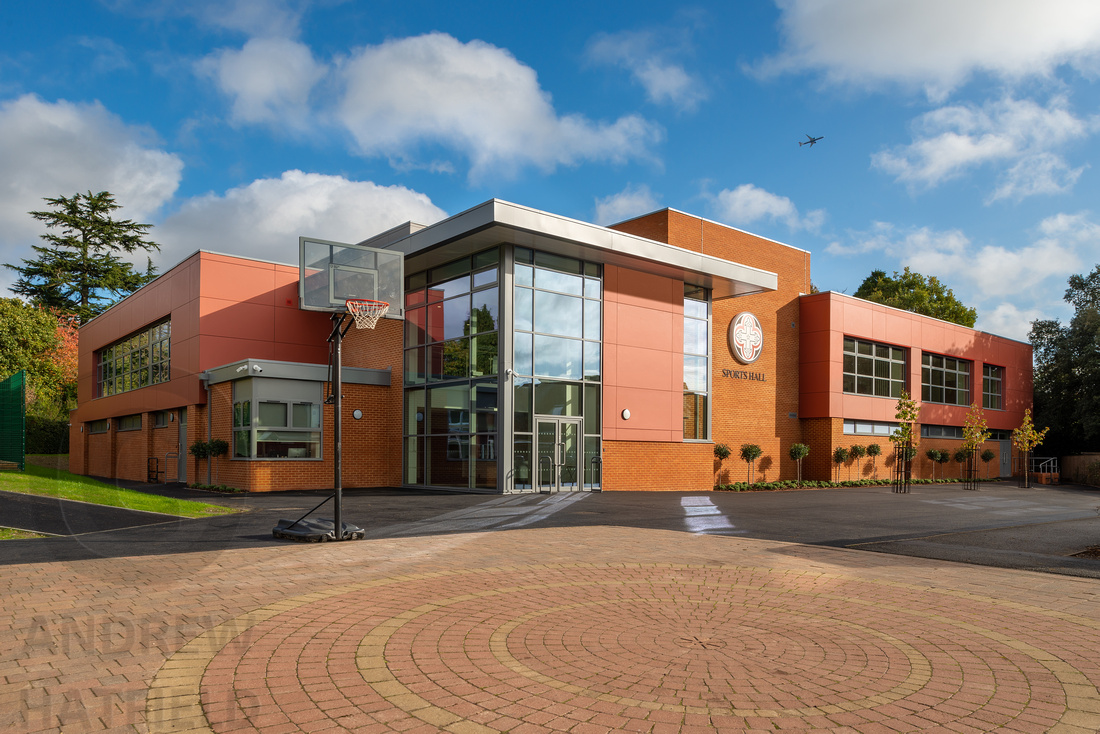 Bishopsgate school sports hall, Windsor - architectural photographyNew sports hall at Bishops gate school Egham, completed in September 2020. Photographed by Andrew Hatfield
Bishopsgate school sports hall, Windsor - architectural photographyNew sports hall at Bishops gate school Egham, completed in September 2020. Photographed by Andrew Hatfield
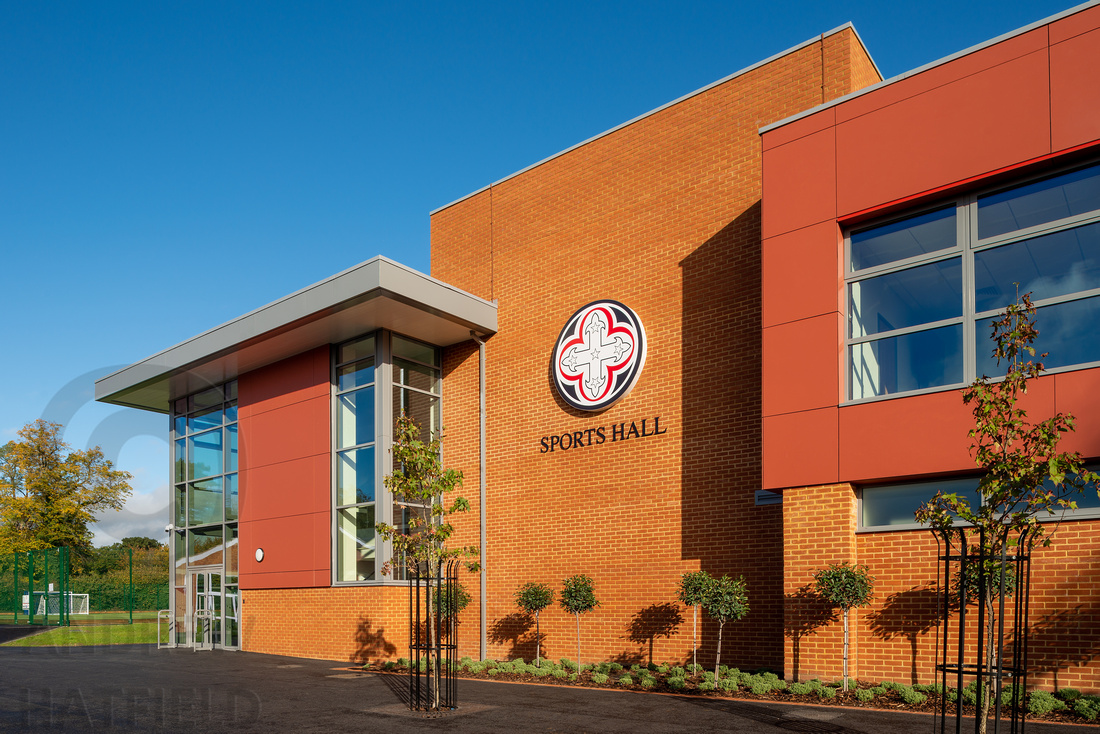 South elevation Bishopsgate school sports hall, Windsor - architectural photography
South elevation Bishopsgate school sports hall, Windsor - architectural photography

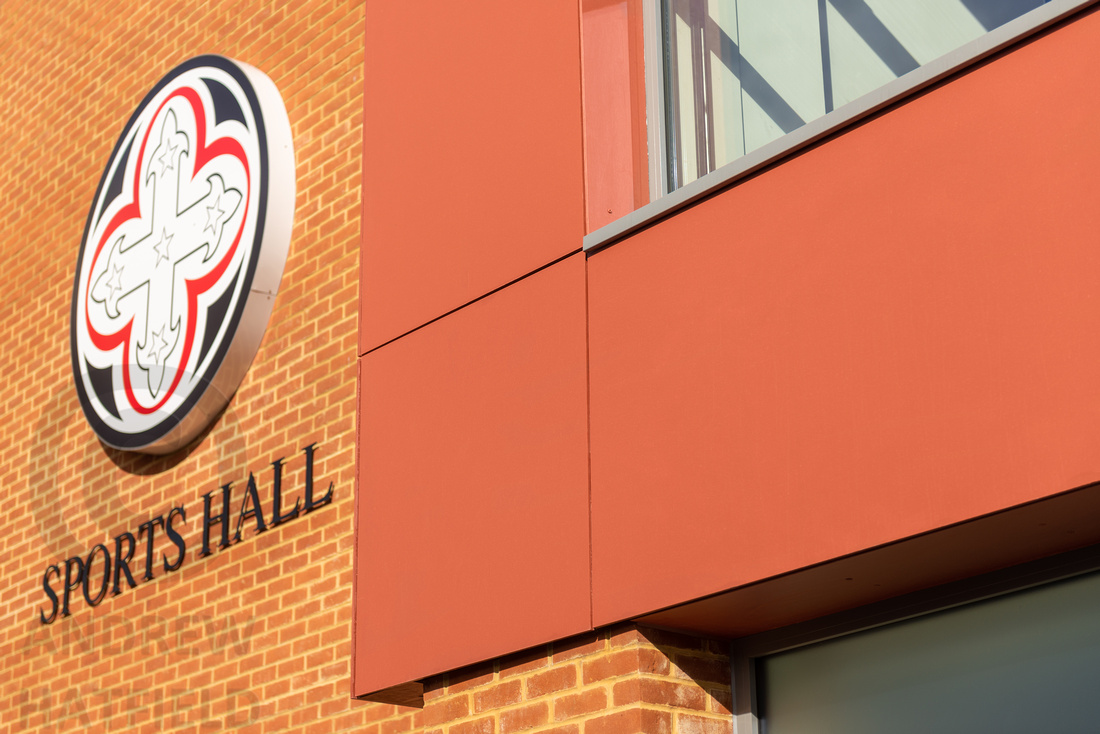

This was an interesting job at Cambridge Design Partnership near Cambridge, commissioned by Harvey Norman Architects. To fill temporary demand for office accommodation 10 shipping containers and a tensioned fabric roof were used to create a suite of meeting rooms with an atrium canteen. The whole installation was all squeezed into an existing courtyard.
We used conventional still photography and low level drone photography to document the project. This kind of scheme really demonstrates the benefit of the drone photography as showing the scale and fit of the installation from the ground would be almost impossible.
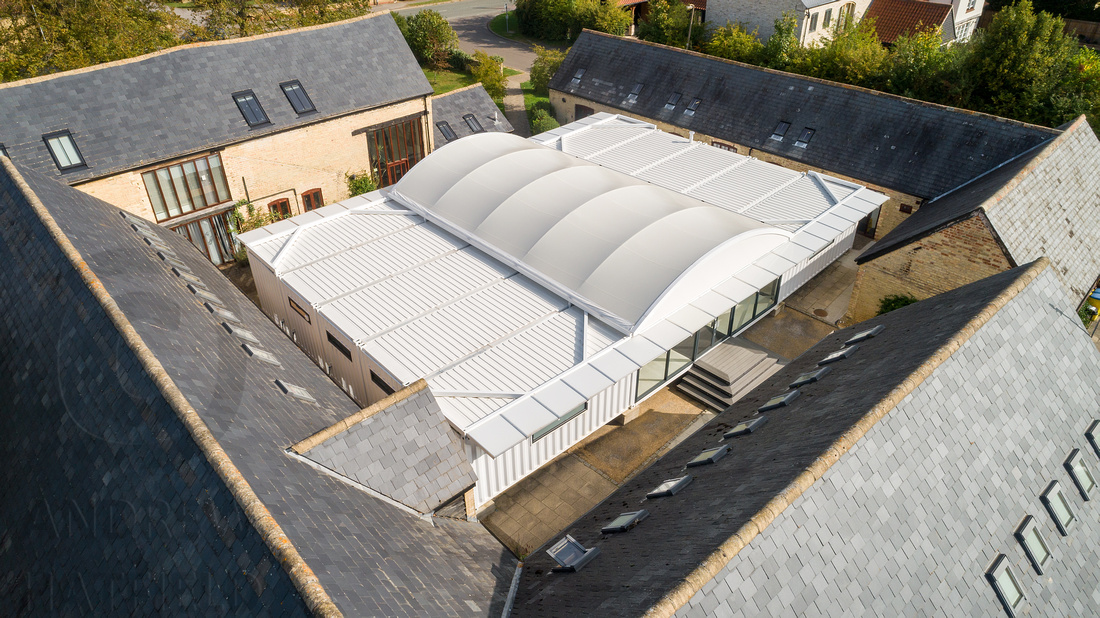


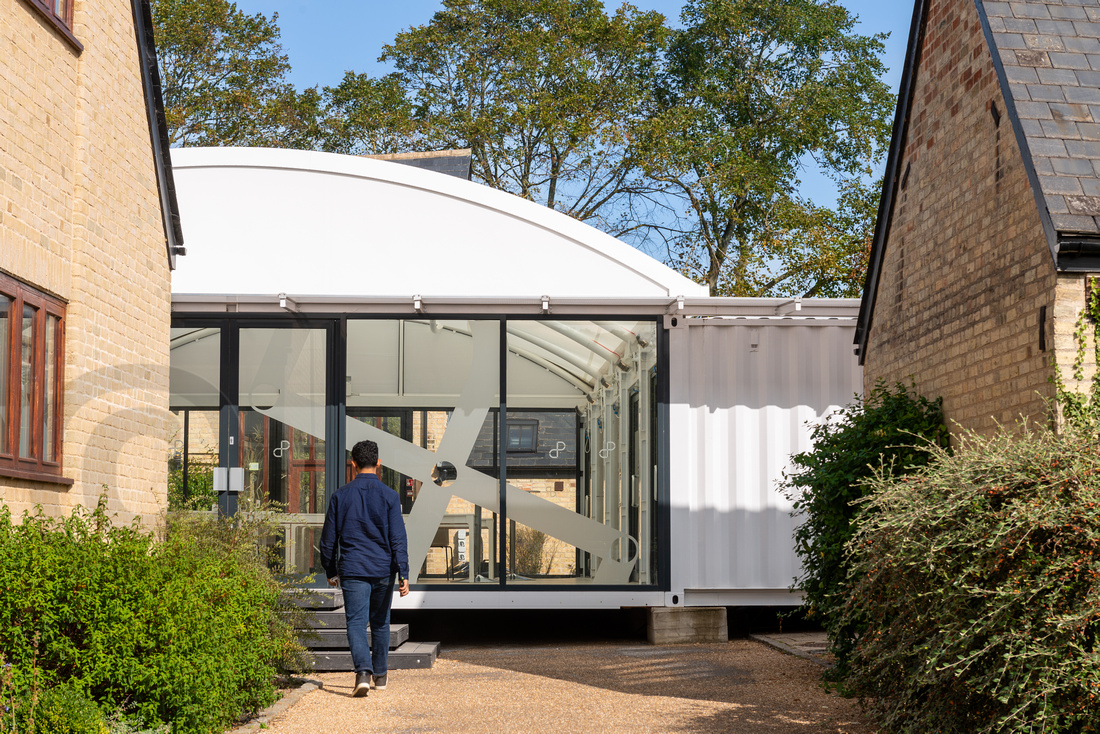
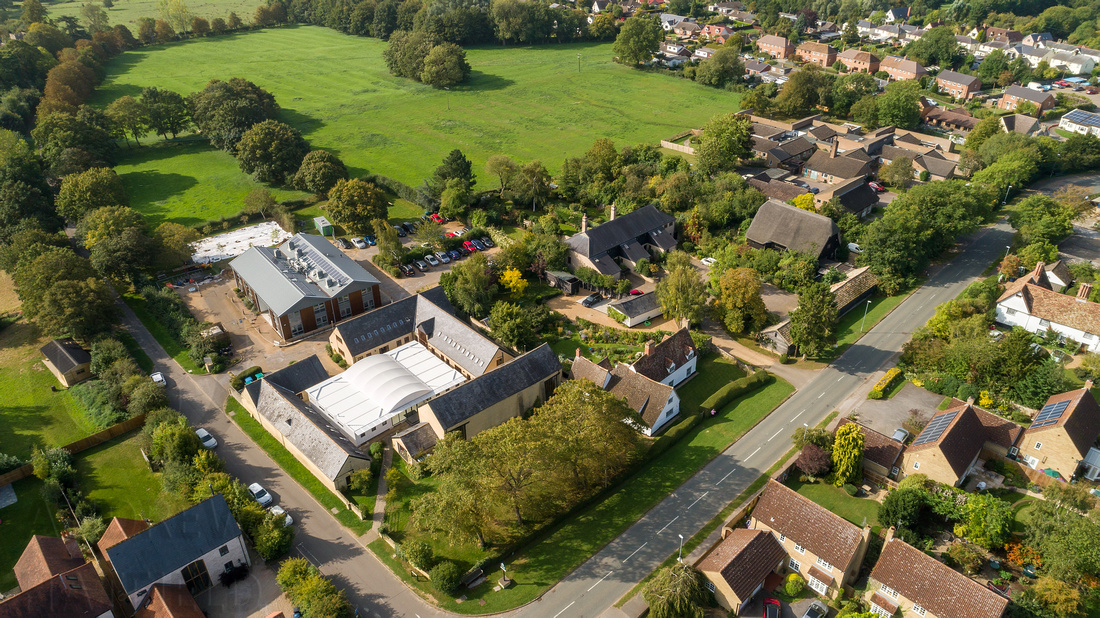
The import of DJI drone footage into Premier Pro has always worked without any issue for me, until recently. I shot some drone footage on the 16th June 2020 and the footage would not import and I got an error saying the files were damaged. This was the case with all the files and a bit worrying after a days filming.
The only thing I could thing of that had changed was the introduction of hardware rendering in Premier Pro.
I turned off GPU rendering and then found the files would import as usual without an issue and that GPU rendering could be turned on after import, also all the files now import without issue whether GPU rendering is enabled or not.
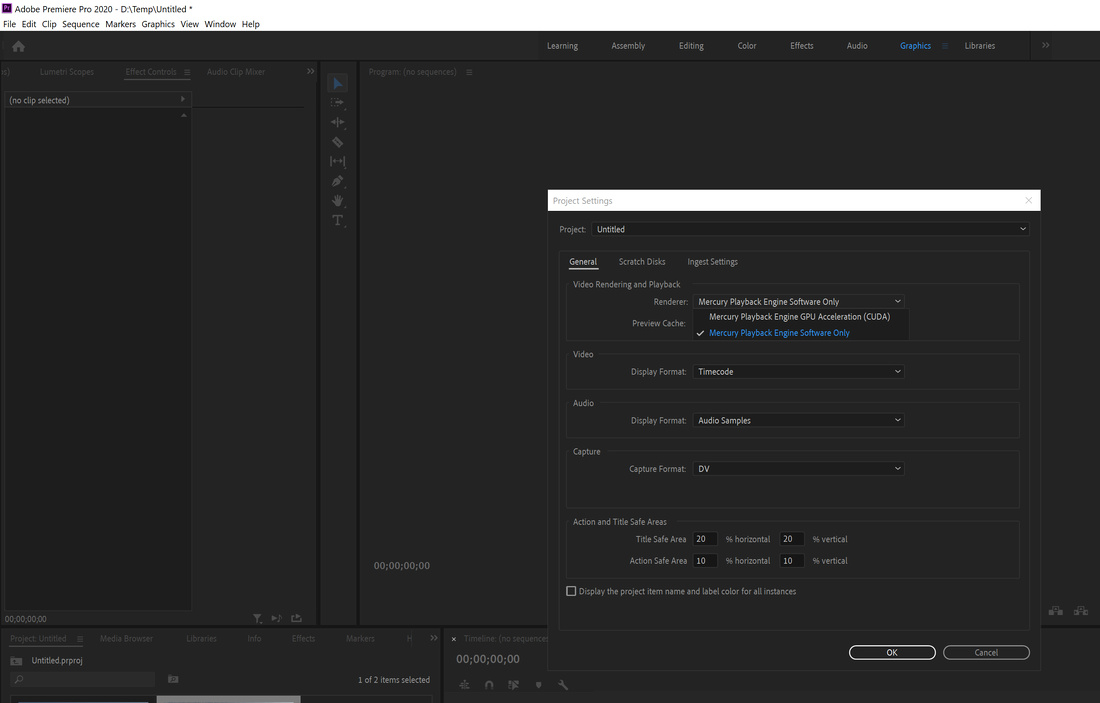
I was in Basel for a few days just before it was all locked down due to the Coronavirus. I did manage to visit a few interesting sites though. If you have an interest in Modernist and High Tech architecture the city is well worth a visit when things return to normal. If you like the work of Herzog & de Meuron you will find about 35 of their projects spread across the city centre. The Vitra Campus is also very interesting featuring the work of a veriety of architects spread out across the campus and production areas.
I didn't have time to use all of my architectural photography gear so had to do with my pocket Panasonic GX80 with the 12-32 pancake lens.
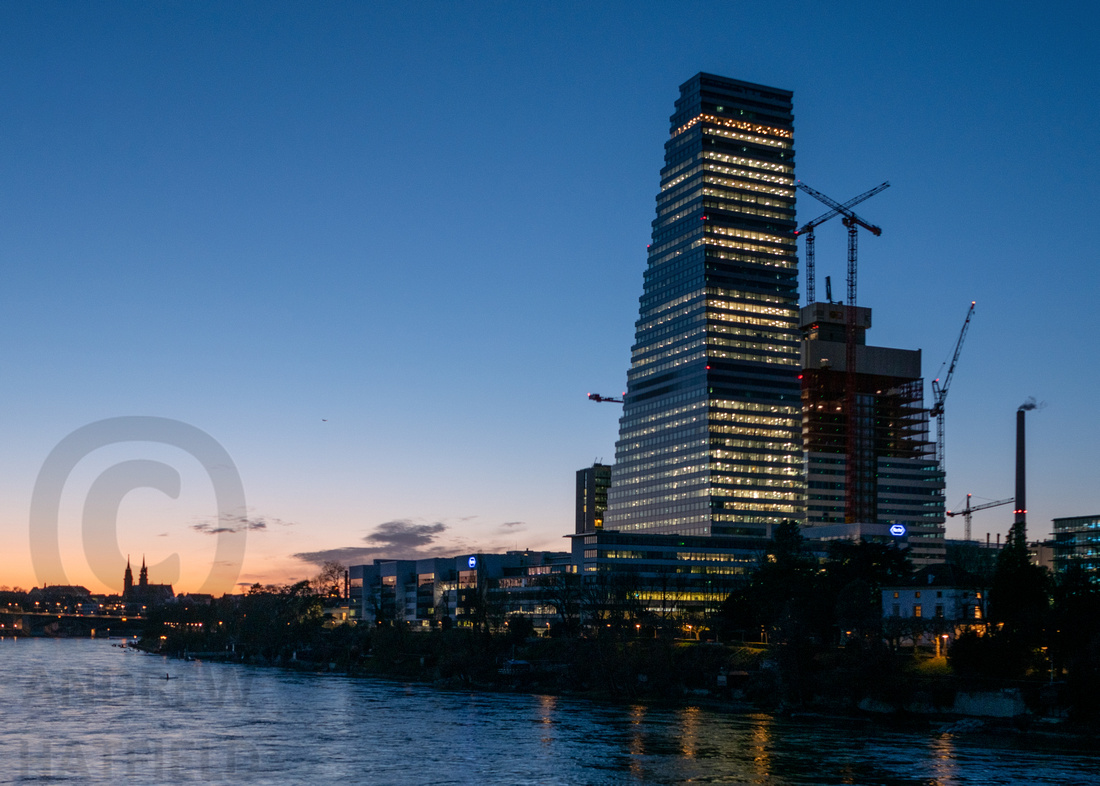 Roche Tower at night also showing the partially constructed second tower, Herzog & de Meuron (2020)
Roche Tower at night also showing the partially constructed second tower, Herzog & de Meuron (2020)
 Roche Tower from south of Rhine, Herzog & de Meuron
Roche Tower from south of Rhine, Herzog & de Meuron
 Roche Tower East elevation from street level, Herzog & de Meuron (2020)
Roche Tower East elevation from street level, Herzog & de Meuron (2020)
 Vitrahaus, Vitra Campus, Herzog & de Meuron (2010)
Vitrahaus, Vitra Campus, Herzog & de Meuron (2010)
 Vitra Design Museum, Vitra Campus, Frank Gehry (1989)
Vitra Design Museum, Vitra Campus, Frank Gehry (1989)
 Fire Station, Vitra Campus, Zaha Hadid (1993)
Fire Station, Vitra Campus, Zaha Hadid (1993)
 Fire Station, Vitra Campus, Zaha Hadid (1993)
Fire Station, Vitra Campus, Zaha Hadid (1993)
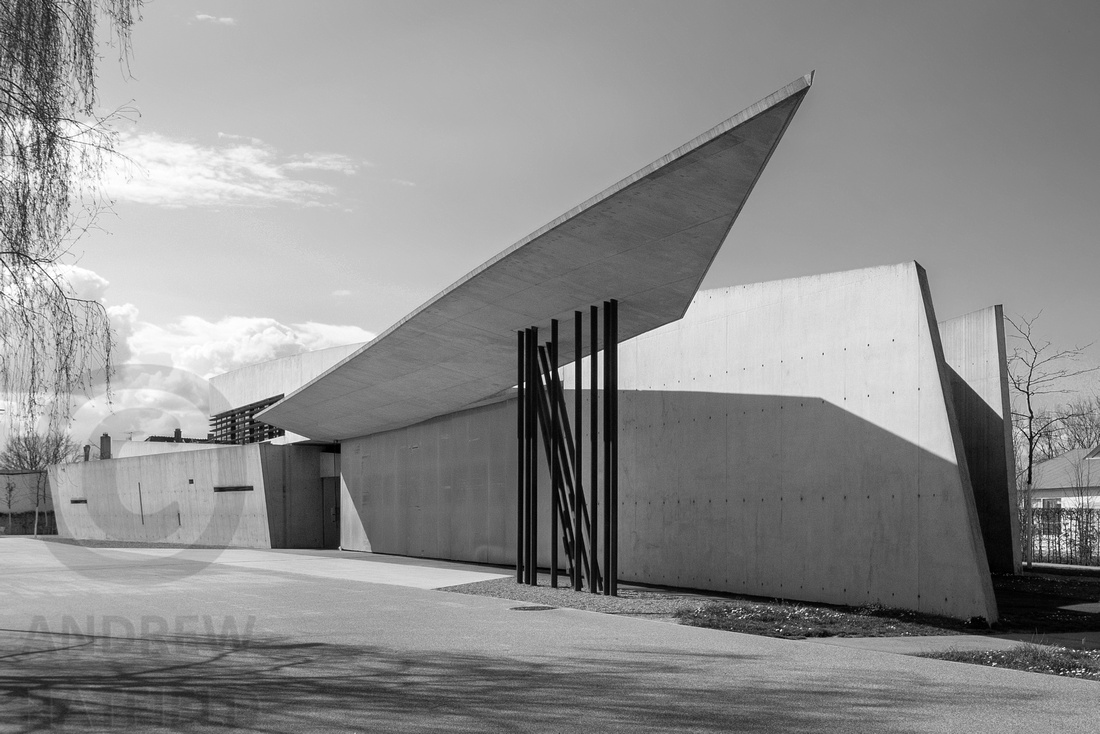 Fire Station, Vitra Campus, Zaha Hadid (1993)
Fire Station, Vitra Campus, Zaha Hadid (1993)
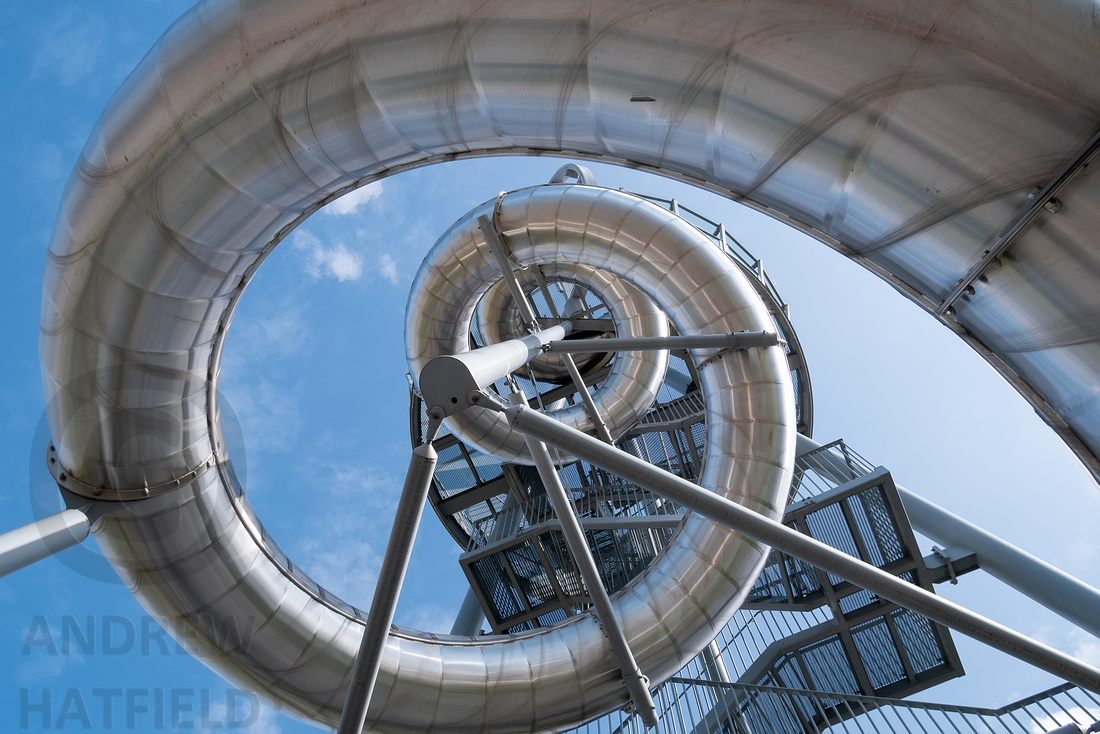 Vitra Slide Tower, Vitra Campus, Carsten Holler (2014)
Vitra Slide Tower, Vitra Campus, Carsten Holler (2014)
 Factory Building, Vitra Campus, Nicholas Grimshaw (1983)
Factory Building, Vitra Campus, Nicholas Grimshaw (1983)
I have had regular commissions from Ingleton Wood over the past 10 years and it was great to be asked to photograph there new offices at 10 Alie Street in White Chapel. The whole design and implementation of the project was handled by staff from the London office. Running the project and the relocation was no doubt helped by the fact it was just a short walk across the street from there old offices at 1 Alie Street.
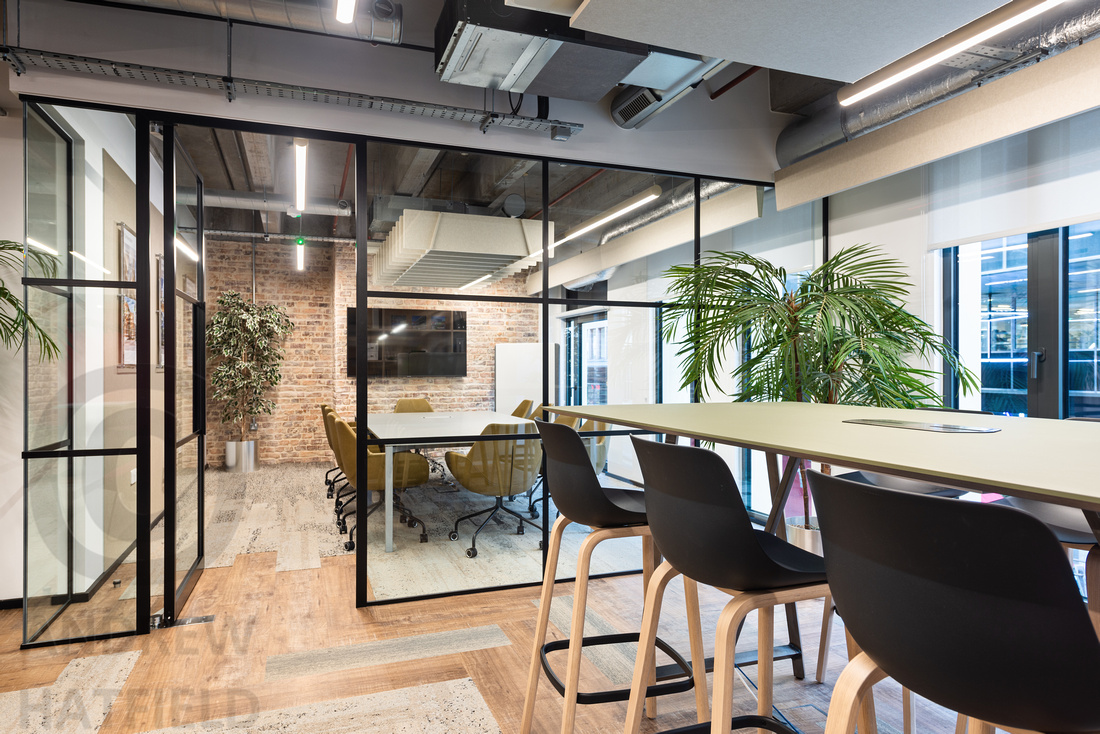
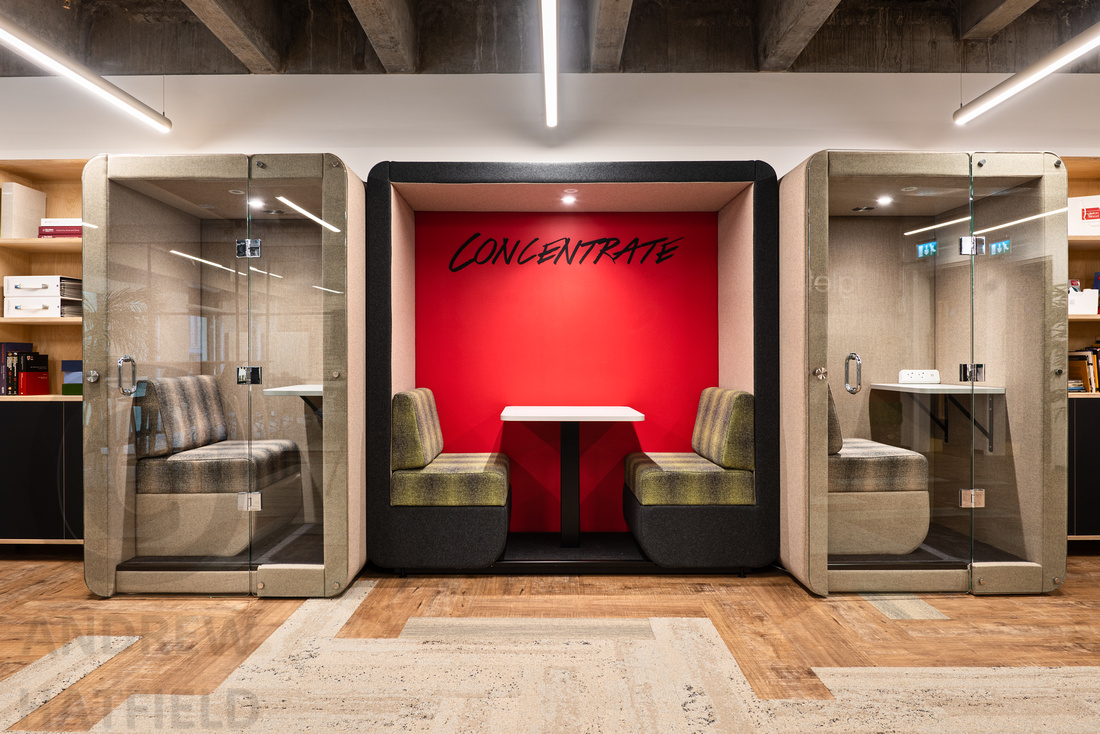
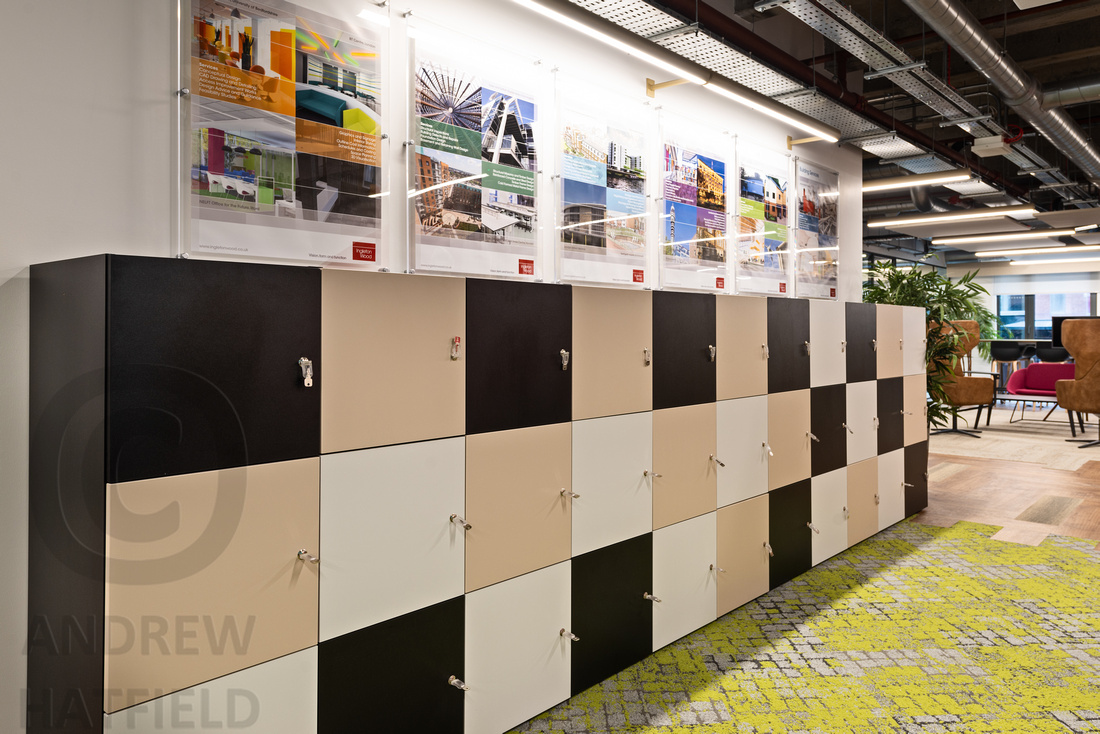
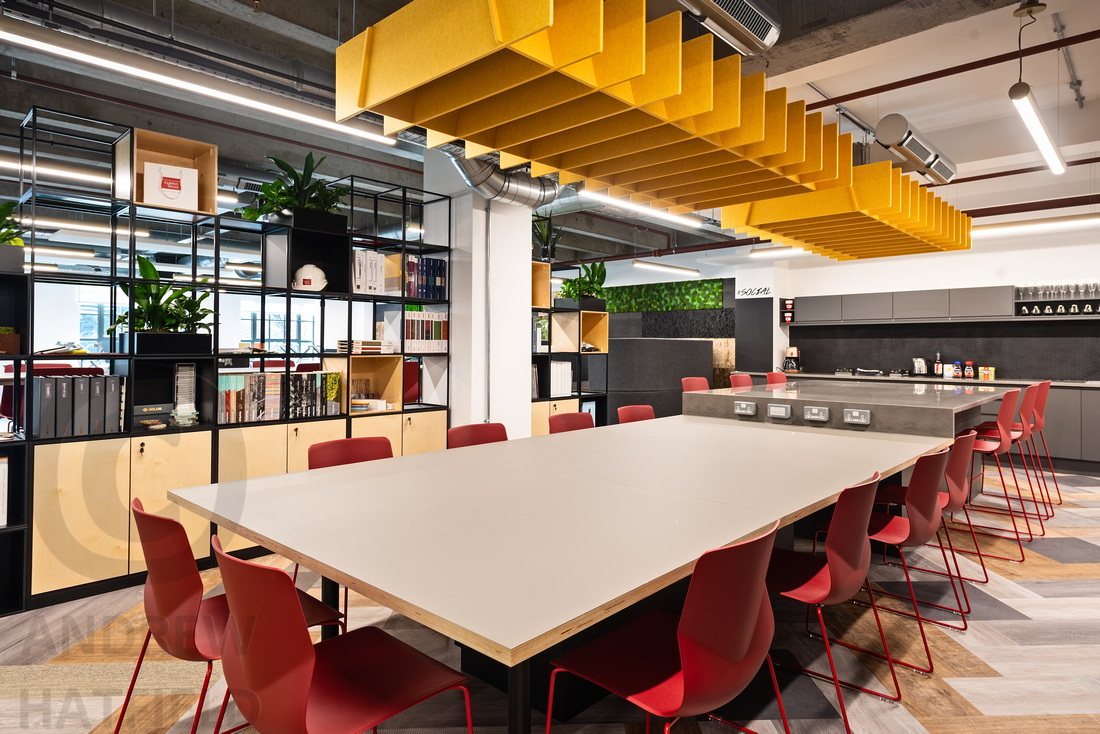

This was an interesting project to photograph for DW Windsor and was one of the first projects arising from the City of London’s Lighting Vision. The scheme has lots of benefits in terms of centralised control and reduced energy consumption but from a photographic point of view the benefits were improved night views of St. Paul's cathedral and replacement of the blanket lighting with localised lighting using illuminated hand rails. Shorter light columns have also been used to reduce the visual intrusion as you walk up St. Peters Hill. This really draws your eye to the cathedral but provides plenty of light where it's needed. They have also gone for a much more traditional colour temperature of 2700K which seems to add to the character of the location. It's usual practice with photography to correct the colour temperature to give a more neutral colours. Although in this instance the client wanted to show how the lighting maintained the heritage look and warmth of the lighting.
There are lots of things to be considered when planning commercial drone flights. The main aspects are identifying and mitigating safety risks, considering intrusions of privacy and the effects on other air users. These factors normally have a negative impact on what you can photograph and how you can photograph it. With that in mind it was a real pleasure to photograph this limestone extraction at a quarry in Derbyshire. The location was well away from other properties and the only people on the shoot were safely enclosed in huge plant. It's nice to have the freedom of knowing your 2kg drone isn't going to damage a 60 Tonne excavator and you can get as close as you like to the work.
I have recently been out photographing submissions for the Brick Design Awards 2019. The first scheme below is a new 6 storey student accommodation building in Hunter Street Chester. The building was photographed in the late afternoon to provide good contrast and show off the detailing on the South elevation. The project has been shortlisted in the Medium Housing Development category.
The second scheme is a housing development at Kings Hill, West Malling. Photographed on a clear day giving good contrast to show of the detail accurate exposures were needed to make sure all the detail was retained in the light brickwork. The project has been shortlisted in the Large Housing Development category.
I have recently update my drone show reel, watch it in full 4K on youtube.
The video features,
Holdenby House, Northamptonshire
The Moller Centre, Cambridge
Franklins Gardens, Northampton
Elekta, Crawley
Unite Student accommodation, Durham
Centurion Golf Course, St. Albans
Imperial Tabaco, Southampton
INEOS Transatlantic Racing HQ, Portsmouth
Tile Mountain, Stoke on Trent
Here are a few shots from a night shoot in Bradford on Avon, Wiltshire. The brief was to document an new car park lighting scheme which has recently been awarded the Good Lighting’ award by the Commission for Dark Skies and received a 5 star rating by Lux magazine. The shoot was made up of conventional still photography and drone shots. The drone shots were used to show off the scheme as a whole and demonstrate how well the light distribution was controlled. The shoot was commissioned by UK lighting manufacturer DW Windsor. Just be aware you do need additional permission from the CAA for commercial drone flights at night.
Drone filming and architectural photography at INEOS HQ, Portsmouth
This was really interesting combined drone video and architectural photography shoot at the INEOS sailing teams HQ in Portsmouth. The work was commissioned by Prism Architectural from Mildenhall who designed and manufactured the glazed facades to the main building and feature stairwell. The drone was used to get close to the façade while still allowing the building to be shown in context, these type of shots emphasis the fact that the creation of narrative and the use of strong composition are just as important when using a drone or conventional ground based camera.
It was great project to document and using the drone really made the shoot, although having to fly round the aggressive seagulls and deal with the radio interference from the adjacent Isle of White ferry made it a bit stressful.
Urban drone film shoots like these take a lot of planning and co-ordination to make sure risks are minimised and all the conditions laid down by the CAA are adhered to. Thanks to INEOS for their help and particularly Sarah Alexander for making it all happen.
Nice to see that One Angel Square in Northampton was a winner in the RIBA East Midlands Award 2018. Congratulations to BDP and Consarc.
It was great to revisit this completed project in 2017 after being commissioned back in 2013 to take the original images used for the design competition visualisations.
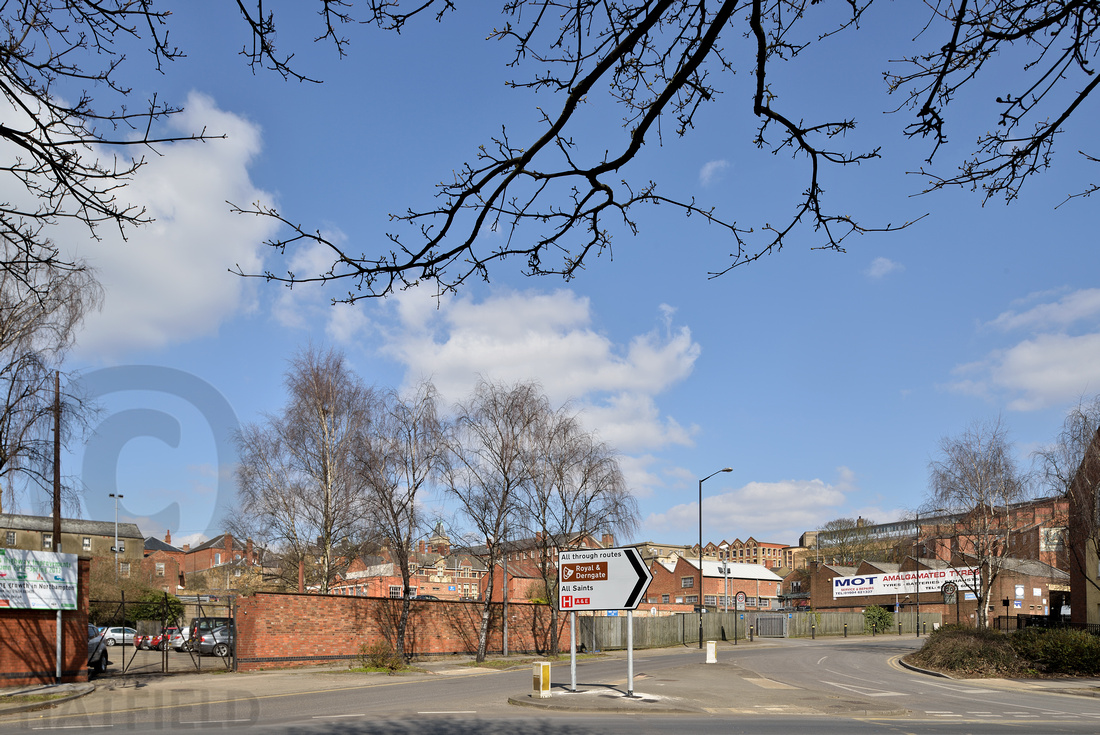

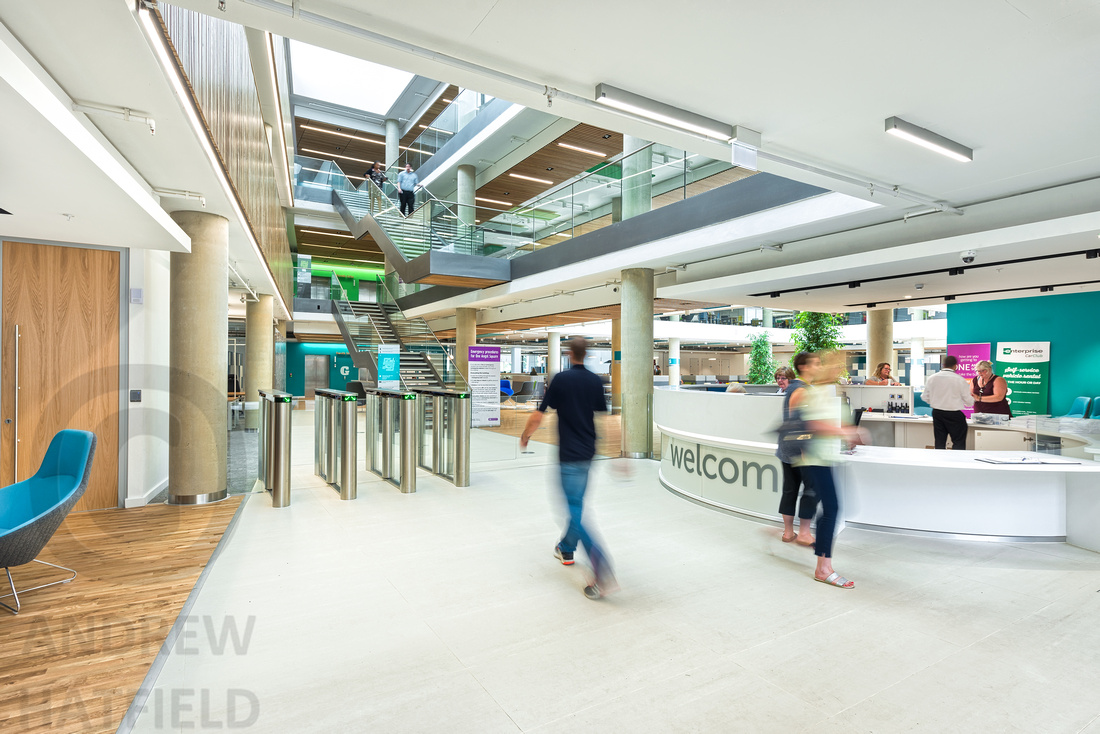





This project is located at Cornerstone in Crawley, a redevelopment project within the Air Traffic Zone of London Gatwick Airport. With the weight of drone that I use it would be legal to fly within this area without the permission of Gatwick Airport Air Traffic Control, although I didn't feel this would be very wise. I approached LGA and applied for their own Permit for the Operation of UAV's. This was fairly straight forward although they requested that I reduce my maximum operating height from the usual 130m down to 50m. This wasn't a problem for me as the images I like to capture are generally lower than this showing off the building elevations rather the plan.
The second part of the project was still photography of the exterior and the spectacular interior space.
 looking west above the moller centre cambridge - aerial photographyexample of commercial drone photography and video in cambridgeshire
looking west above the moller centre cambridge - aerial photographyexample of commercial drone photography and video in cambridgeshire
I’ve recently completed all the various steps to obtain CAA permission to operate a drone or UAV in CAA speak on a commercial basis. When I was looking in to the process in spring 2017 I found it difficult to find all the stages I would need to go through to actually receive the paperwork from the CAA. This is not an exhaustive guide to the route merely my view as a architectural photographer and video maker wanting to extend their services to offer clients aerial imagery. At the start of the process I had little experience with remote control models and no experience with the usual quad rotor drones.
After a number of enquiries from existing clients wanting aerial imagery I decided to begin the process of obtaining the relevant CAA permission to operate. The first thing I found was that I would need some training to prove to the CAA I was competent to operate a drone. There are loads of companies offering training and assessment services on the web but the CAA publishes a list of approved training organisations.
I contacted a few of the companies on the CAA list and picked Cambridge UAV Academy because they were very efficient when answering my queries, they ran regular monthly courses, offered free retests and they were fairly local. They weren’t the cheapest but the cheaper firms would have required greater travel costs, hotel accommodation and some didn’t offer free retests which I thought I might need.
Around the middle of March I booked onto Cambridge UAV’s 2nd/3rd May course, at the same time and after a fair bit of research I purchased a DJI Phantom 4 Pro and a Seyma X5. When you come to take your flight test you need to show that you have at least 2 hours flight time on the drone you are being tested on. Having never flown a drone I was a bit reluctant to risk the £1500 Phantom 4 at the start so would practice on the £35 Seyma X5 toy drone in the evenings before using the Phantom at the weekends. It took me about 10 hours on the Seyma before I could get to grips with the control reversal you need to use when the drone is coming towards you.
When the course came round I joined about 20 other people at Cambridge UAV’s offices in Godmanchester and was treated to 2 full days of classroom lectures on Air Law, Meteorology, Flight planning etc. all fairly boring stuff but the instructor Alan Perrin shared enough anecdotes and real world scenarios to keep it all interesting. There was an exam on the afternoon of the second day and everyone passed.
Once you have passed the exam, have at least 2 hours flight time on type and obtained commercial drone insurance you can take the flight test. I was lucky in that I had said to Cambridge UAV that I could be flexible on dates for the flight test, this combined with a run of decent weather meant that I was able to take and pass the flight test on the 10th of May. It could easily take a couple of weeks to get a test if the weather isn’t great.
With the exam and flight test in the bag I then had to complete a Commercial Operations Manual outlining how I was going to apply the theoretical knowledge gained on the course to my real world drone operations. Covering everything from pre-flight assessment, risk assessments, drone maintenance, record keeping etc. The idea being this is a bespoke document written to support a specific operation and a typical manual is about 60 pages long. In my case there were a couple of ways of creating this, the first was to produce the document from scratch and then forward it to Cambridge UAV for proofing and editing before CAA submission. The second option was to use Cambridge UAV’s Ops. Manual writing service, where they take your specific details and modify their template accordingly to produce your bespoke manual. Although this isn’t a free service it will save you a considerable amount of time and effort. I went for the Ops. manual writing service and soon received my draft manual from Ca
All of the above had to be submitted via email in pdf format. When I submitted it I didn’t receive any form of receipt. The CAA advise they can take up to 28 working days to process the application. I received my permission via email on the 12th of June 2017 one month after submission without any issues. This permission is valid for 12 months.
Another thing that is a bit difficult to identify at the start of the process is how much it is going to cost. In my case I have spent the following.
| Cambridge UAV Academy Training and Flight test | £1,194 |
| Cambridge UAV Academy Ops Manual Service | £358 |
| Commercial Drone Insurance | £407 |
| CAA Submission Fee | £173 |
| All these include VAT where applicable | TOTAL £2,132 |
I hope that’s of use to anyone contemplating applying for permission to operate a drone commercially. There is a lot more information on the CAA site and it’s worth checking on there regularly as guidance and the regulations appear to be changing constantly.
Get in touch if you would like any Architectural aerial video or stills work throughout the UK but particularly in Cambridgeshire and Northamptonshire.
Renewal Process
It has been nearly a year now since I was granted my PfCO and I have just renewed my permission with the CAA.
- Operations Manual with any revisions, completed update log, signed and dated
- Form SRG1320 requesting renewal and providing payment details
- Evidence of your insurance cover
The fee for a renewal and initial applications has recently increased, as of 01/04/18 it is £243.
You can apply for renewal up to 90 days before the expiry of your existing permission, I applied on 12/04/18 and had the new permission granted on 30/04/18. I took the renewal opportunity to apply for variation as well and have added a Night Rating to my existing permission, all detailed in my revised Ops Manual. A separate variation to the PfCO would cost £243 and require submission of the same documents as the renewal.
General Observations
Here are a few of my observations regarding the commercial operation of a drone in the UK from a photographers perspective which you should consider when working out your business case.
In addition to the above original set up costs I have had to purchase 6 additional batteries and an additional charger to allow me to fly uninterrupted for half a day. Typical cost of Phantom 4 Pro batteries is about £160ea.
If you place a high importance on the quality of imagery you need to working in good light with some level of direct sunlight. Good light with low winds can be a bit difficult to forecast and days with both seem fairly infrequent requiring flexible clients and lots of rebooking.
Lots of time can be wasted in looking at the feasibility of flights, quoting work and rebooking flights and you should consider how you are going to account for those costs.
Drone technology is developing very rapidly at the moment, features and performance are going up while the cost is coming down. The cycle of significant drone upgrades and releases appears to be around 18 months. As a result you should consider the repayment of any capital investment over much shorter periods than normal camera equipment.
mbridge UAV. It needed a couple of hours modification but I was able to submit it to the CAA on the 12th on May. When I submitted my application to the CAA I used form SRG1320 and include the following,
- Operations Manual including a photo of my UAV
- Copies of my remote pilots qualifications from Cambridge UAV
- Evidence of at least 2 hours flight time in the preceding 3 months
- Copy of my commercial flight insurance
- Payment notification form FCS1500
These images are from my second volumetric building shoot in recent months. This time I was working for Caledonian Modular who specialise in the large scale off site construction of volumetric buildings, such as high rise hotels, residential and educational buildings. This new building was at Ashville School in Harrogate and replaces old facilities at the front of the sports hall with a new reception, staff offices, visitor café, gym, dance studio and changing facilities.
Normally with modular buildings it is easy to see where the modules intersect and how the unit size impacts on the design layout. With this building I got no sense of the modular construction and would have assumed it was all constructed on site which is a real testament to CM's design and construction methods.
The exterior was relatively easy to photograph and I just had to wait until the afternoon to make sure the sunlight was falling across the main elevation to provide plenty of contrast revealing the form and detailing. The interior images were more difficult as the large south facing floor to ceiling windows needed careful placement of lots of off camera flash units to balance the daylight.
 south elevation, sports centre, ashville school, harrogatefront elevation of the new modular constructed sports centre at ashville school in harrogate. image commissioned by caledonian modular and photographed by andrew hatfield.
south elevation, sports centre, ashville school, harrogatefront elevation of the new modular constructed sports centre at ashville school in harrogate. image commissioned by caledonian modular and photographed by andrew hatfield.
 brise soleil detail, new sports center, ashville school, harrogate brise soleil detail to the front elevation of the new modular constructed sports centre at ashville school in harrogate. image commissioned by caledonian modular and photographed by andrew hatfield.
brise soleil detail, new sports center, ashville school, harrogate brise soleil detail to the front elevation of the new modular constructed sports centre at ashville school in harrogate. image commissioned by caledonian modular and photographed by andrew hatfield.
 new pool side cafe, ashville school, harrogate - interior photographyview across the new café area towards the existing swimming pool at ashville school in harrogate. image commissioned by caledonian modular and photographed by andrew hatfield.
new pool side cafe, ashville school, harrogate - interior photographyview across the new café area towards the existing swimming pool at ashville school in harrogate. image commissioned by caledonian modular and photographed by andrew hatfield.
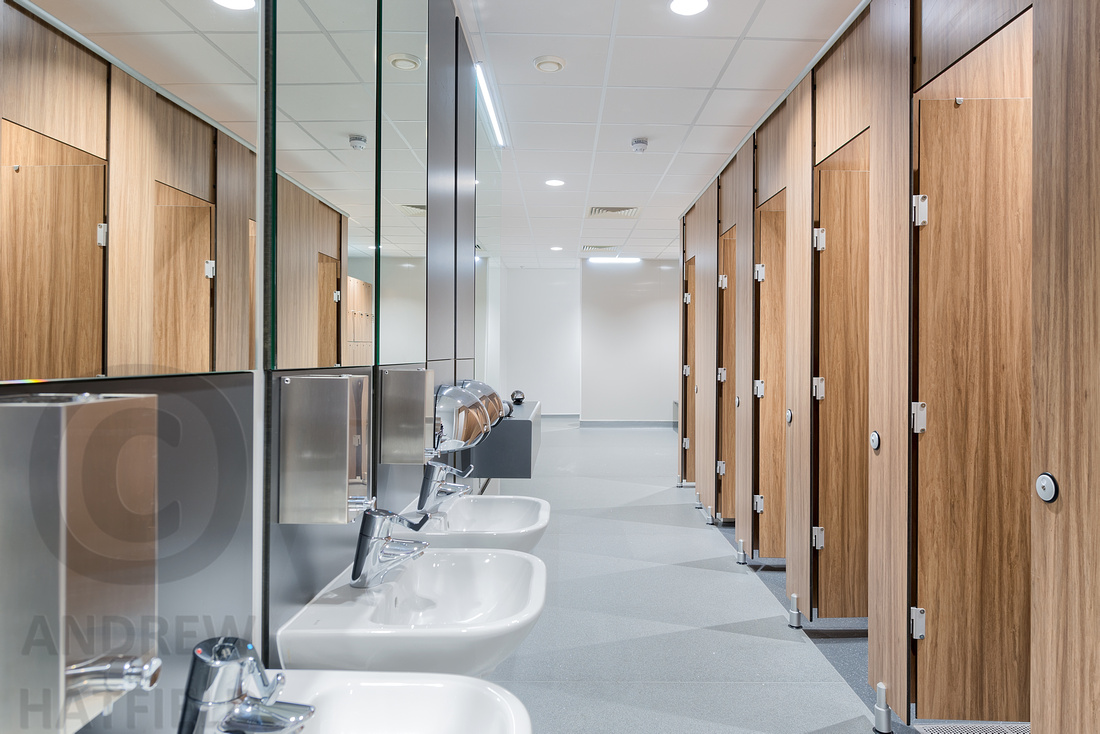 female changing room, new sports center, ashville school, harrogate - interior photographynew female changing facilities at the new modular sports centre at ashville school in harrogate. image commissioned by caledonian modular and photographed by andrew hatfield.
female changing room, new sports center, ashville school, harrogate - interior photographynew female changing facilities at the new modular sports centre at ashville school in harrogate. image commissioned by caledonian modular and photographed by andrew hatfield.
 fitness/dance studio, new sports centre, ashville school harrogate - interior photographynew fitness and dance studio with full height glazing new sports centre at ashville school in harrogate. image commissioned by caledonian modular and photographed by andrew hatfield.
fitness/dance studio, new sports centre, ashville school harrogate - interior photographynew fitness and dance studio with full height glazing new sports centre at ashville school in harrogate. image commissioned by caledonian modular and photographed by andrew hatfield.
Here is part of a set of images taken during the opening of the new visitor reception at the National Physical Laboratory in Teddington. The interior of the reception space has been completely redesigned and sub dived by prominent coloured glass display panels highlighting the work of NPL. The interior design work was carried out by Triad.
I am currently work on a promotional video of the Moller Centre at Churchill College in Cambridge to show off the buildings design and its features as a conference and learning venue. Part of the work was to show off the exterior it's setting within the grounds of Churchill College. Here are a couple of stills extracted from the 4K drone video.
I originally became involved with this project back in 2013 when I was commissioned to photograph the proposed site of the new Northampton Council headquarters building. Those base images of a cleared brown field site and the surrounding buildings went on to form the base images for all the computer renders produced for the design competition to select the final design. The following images we commissioned by Consarc Architects who acted as Client Advisor on the project. The building now houses 2000 staff in the centre of Northampton.
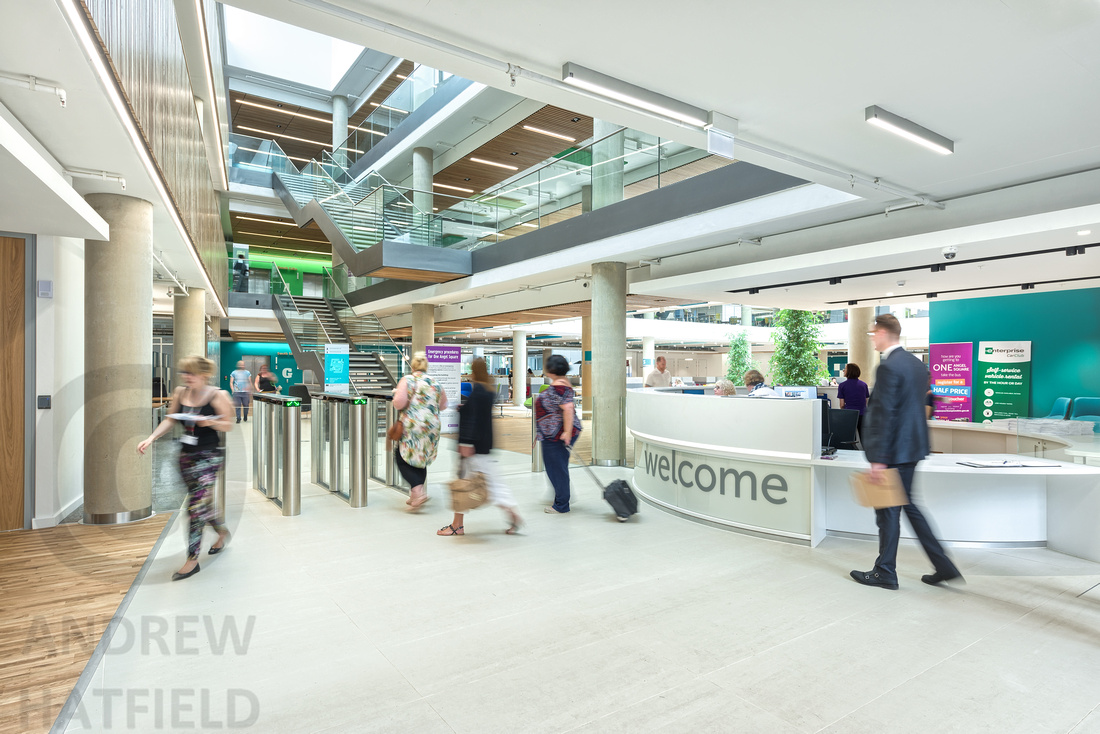 visitor reception at the new council headquarters Northampton - interior photographyInterior photograph of the visitor reception at the Northampton Council HQ looking towards the main stairwell and atrium. Photographed for Consarc Architects by Andrew Hatfield.
visitor reception at the new council headquarters Northampton - interior photographyInterior photograph of the visitor reception at the Northampton Council HQ looking towards the main stairwell and atrium. Photographed for Consarc Architects by Andrew Hatfield.
 central aitrium at the new council headquarters Northampton - interior photographyInterior photograph of the atrium space at the Northampton Council HQ taken from first floor level. Photographed for Consarc Architects by Andrew Hatfield.
central aitrium at the new council headquarters Northampton - interior photographyInterior photograph of the atrium space at the Northampton Council HQ taken from first floor level. Photographed for Consarc Architects by Andrew Hatfield.
 ground floor break out area at the new council headquarters Northampton - interior photographyInterior photograph of the ground floor break out area and meeting rooms at the Northampton Council HQ looking towards the main stairwell and atrium. Photographed for Consarc Architects by Andrew Hatfield.
ground floor break out area at the new council headquarters Northampton - interior photographyInterior photograph of the ground floor break out area and meeting rooms at the Northampton Council HQ looking towards the main stairwell and atrium. Photographed for Consarc Architects by Andrew Hatfield.
 first floor open plan offices at the new council headquarters Northampton - interior photographyInterior photograph of the first floor open plan offices and locker area at the Northampton Council HQ looking towards the main stairwell and atrium. Photographed for Consarc Architects by Andrew Hatfield.
first floor open plan offices at the new council headquarters Northampton - interior photographyInterior photograph of the first floor open plan offices and locker area at the Northampton Council HQ looking towards the main stairwell and atrium. Photographed for Consarc Architects by Andrew Hatfield.
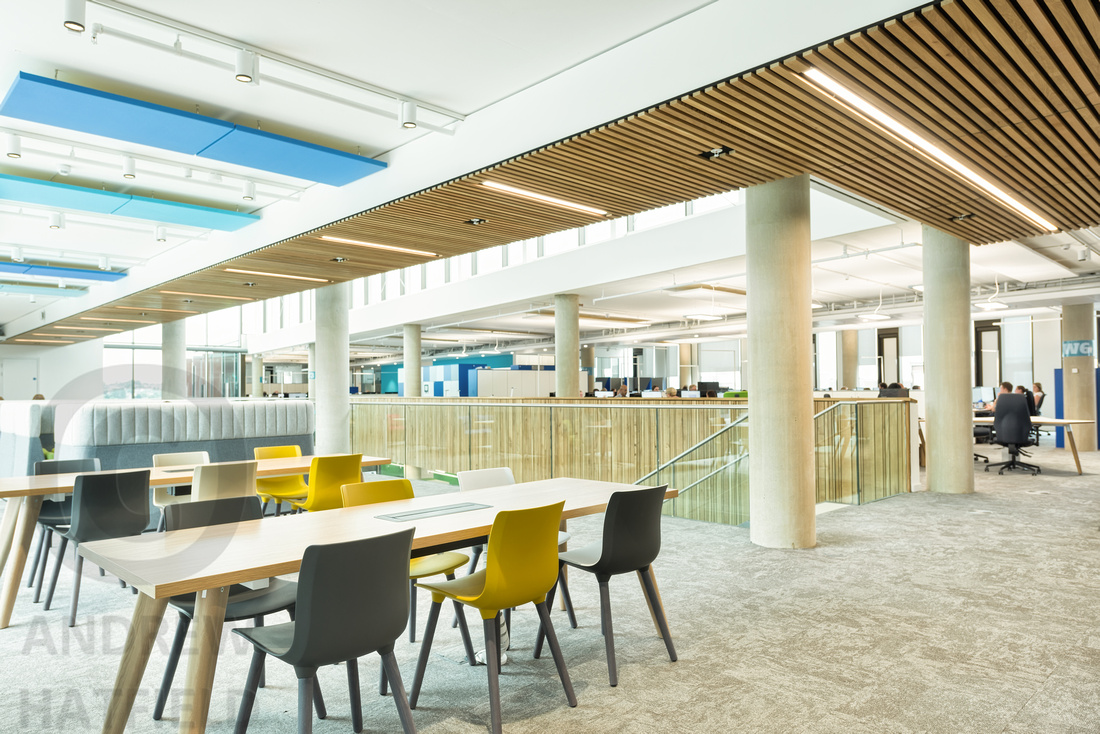 second floor at the new council headquarters Northampton - interior photographyInterior photograph of the second floor stairwell at the Northampton Council HQ looking towards the main stairwell and atrium. Photographed for Consarc Architects by Andrew Hatfield.
second floor at the new council headquarters Northampton - interior photographyInterior photograph of the second floor stairwell at the Northampton Council HQ looking towards the main stairwell and atrium. Photographed for Consarc Architects by Andrew Hatfield.
 meeting rooms at the new council headquarters Northampton - interior photographyInterior photograph of the perimeter meeting rooms at the Northampton Council HQ looking towards the main stairwell and atrium. Photographed for Consarc Architects by Andrew Hatfield.
meeting rooms at the new council headquarters Northampton - interior photographyInterior photograph of the perimeter meeting rooms at the Northampton Council HQ looking towards the main stairwell and atrium. Photographed for Consarc Architects by Andrew Hatfield.
 main stair at the new council headquarters Northampton - interior photographyInterior photograph of the main stair at ground floor level at the Northampton Council HQ. Photographed for Consarc Architects by Andrew Hatfield.
main stair at the new council headquarters Northampton - interior photographyInterior photograph of the main stair at ground floor level at the Northampton Council HQ. Photographed for Consarc Architects by Andrew Hatfield.
 first floor coffee area at the new Northampton council headquartersInterior photograph of the first floor coffee and break out area at the Northampton Council HQ looking towards the main stairwell and atrium. Photographed for Consarc Architects by Andrew Hatfield.
first floor coffee area at the new Northampton council headquartersInterior photograph of the first floor coffee and break out area at the Northampton Council HQ looking towards the main stairwell and atrium. Photographed for Consarc Architects by Andrew Hatfield.
This was a great shoot for Boutique Modern who manufacture bespoke volumetric and modular buildings at their base in Newhaven. The site of the new building was formally a couple of residential garages at the end of a cul-de-sac in Richmond. The site was very compact and the developer required a building solution that filled all the available space. The new building arrived in modules and was craned into position in a single day. There are no real views from the site and so the rooms look into 2 courtyard spaces in the centre and rear of the plot. That said the building makes amazing use of the natural light and the transition between the interior spaces and the alfresco dining area and rear courtyard is visually seamless.
The light, the simple well designed fixtures and fittings make for a very uplifting space to work and no doubt live in.
The images were shot over a single day. Thanks to Debra Morrall for Production and Art Direction and to Barbed who provide all of the furniture.
 Interior Photo shoot of living space, new modular building, Richmond.Interior photoshoot of new modular building in Richmond. This image shows the view from the main living space out to the alfresco dining area with the 2nd bedroom beyond.
Interior Photo shoot of living space, new modular building, Richmond.Interior photoshoot of new modular building in Richmond. This image shows the view from the main living space out to the alfresco dining area with the 2nd bedroom beyond.
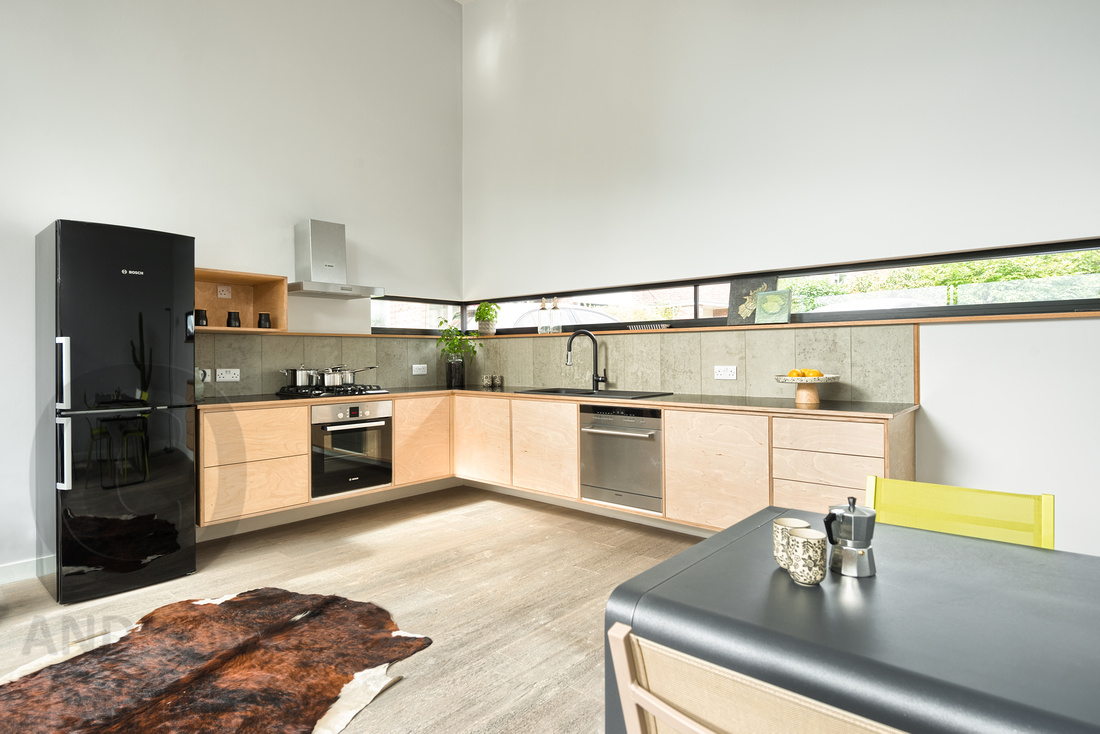 Interior Photo shoot of Kitchen and dining space, new modular building, Richmond.View across the dining space showing the custom made birch ply kitchen beyond.
Interior Photo shoot of Kitchen and dining space, new modular building, Richmond.View across the dining space showing the custom made birch ply kitchen beyond.
 Interior Photo shoot of Master Bedroom, new modular building, Richmond.View across the master bedroom showing the bathroom and internal courtyard beyond.
Interior Photo shoot of Master Bedroom, new modular building, Richmond.View across the master bedroom showing the bathroom and internal courtyard beyond.
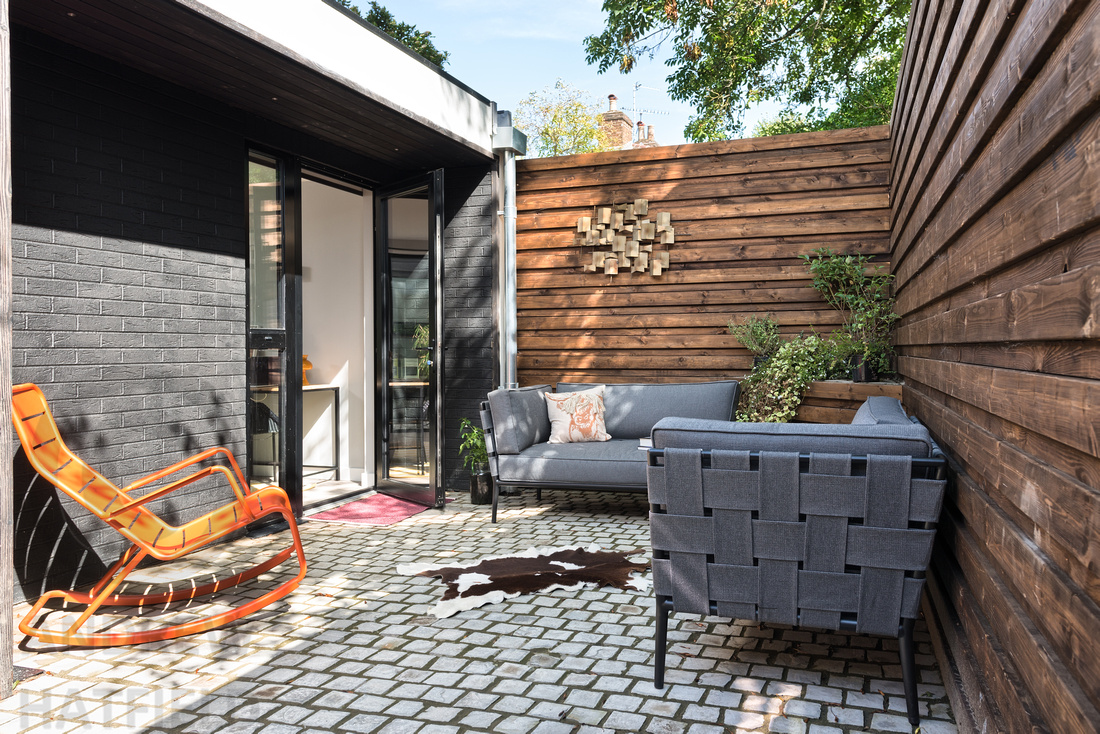 Photo shoot of rear courtyard, new modular building, Richmond.View of the rear courtyard and second bedroom/office. All furniture by Barbed.
Photo shoot of rear courtyard, new modular building, Richmond.View of the rear courtyard and second bedroom/office. All furniture by Barbed.
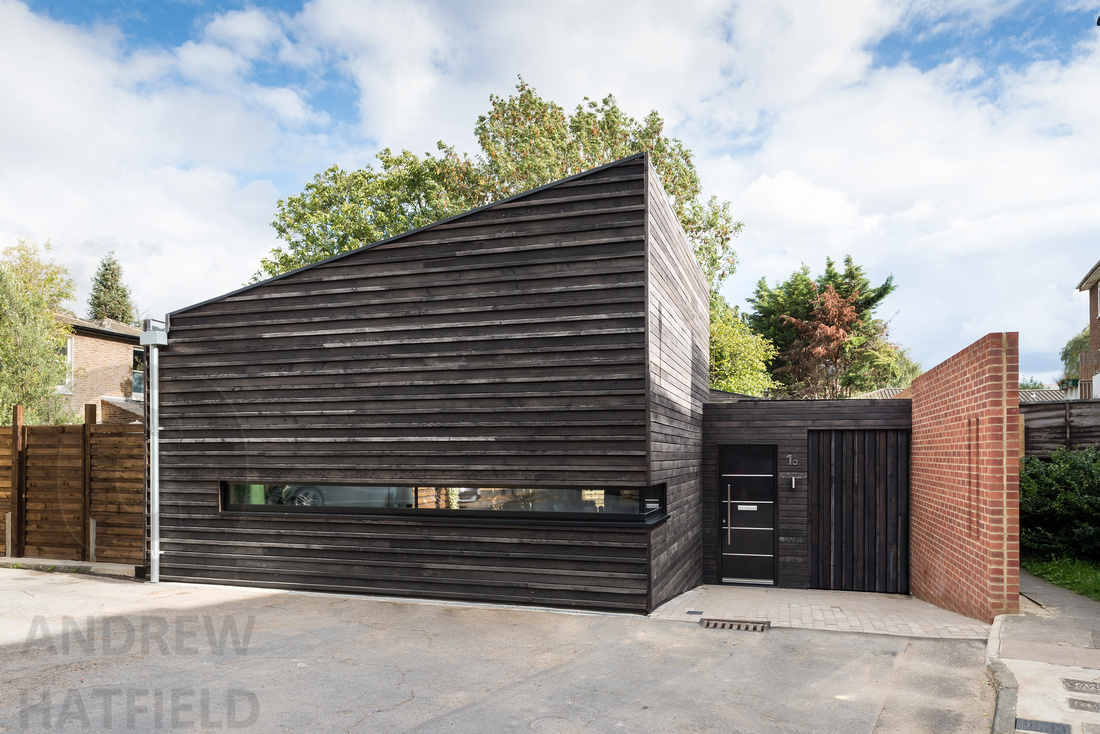 Architectural Photo shoot of the exterior, new modular building, Richmond.View of the north elevation photographed from the end of the cul de sac.
Architectural Photo shoot of the exterior, new modular building, Richmond.View of the north elevation photographed from the end of the cul de sac.
Here are some shots from the recently completed Tile Mountain showroom and distribution centre on a brown field site in Hanley, Stoke-on-Trent. The new £10 million development is on the site of an old tile factory and is the first development in the new Ceramics Valley Enterprise Zone. The site comprise a large 2 storey retail showroom to the east of with the remaineder of the site filled with warehousing distribution and offices.
I was commissioned by the Architects to photograph the interior and exterior of the buildings along with aerial still from the drone. The 4K video from the drone is such high quality that I opted to video all of the flights and extract tiff 25 MB files from the footage. Shot in D-Cinelike these files give great scope for postproduction. All the video footage comes as a bit of bonus when shot like this although the footage isn't that cinematic as the drone is just being used as really tall tripod in situations like this.
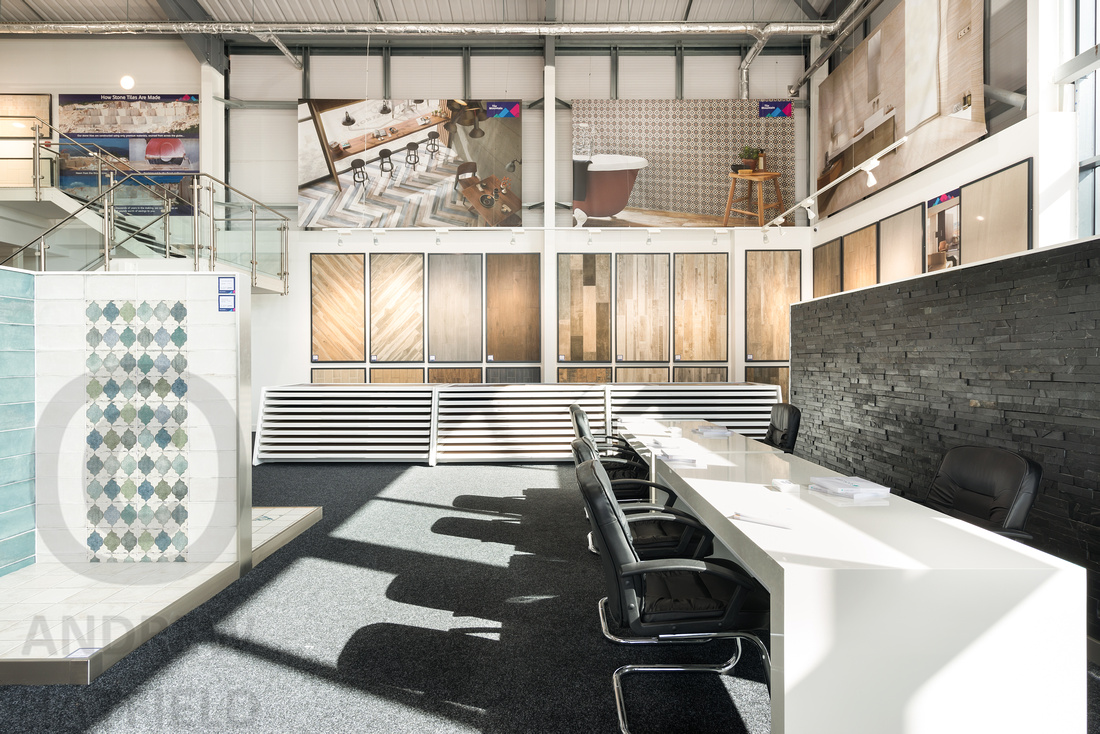


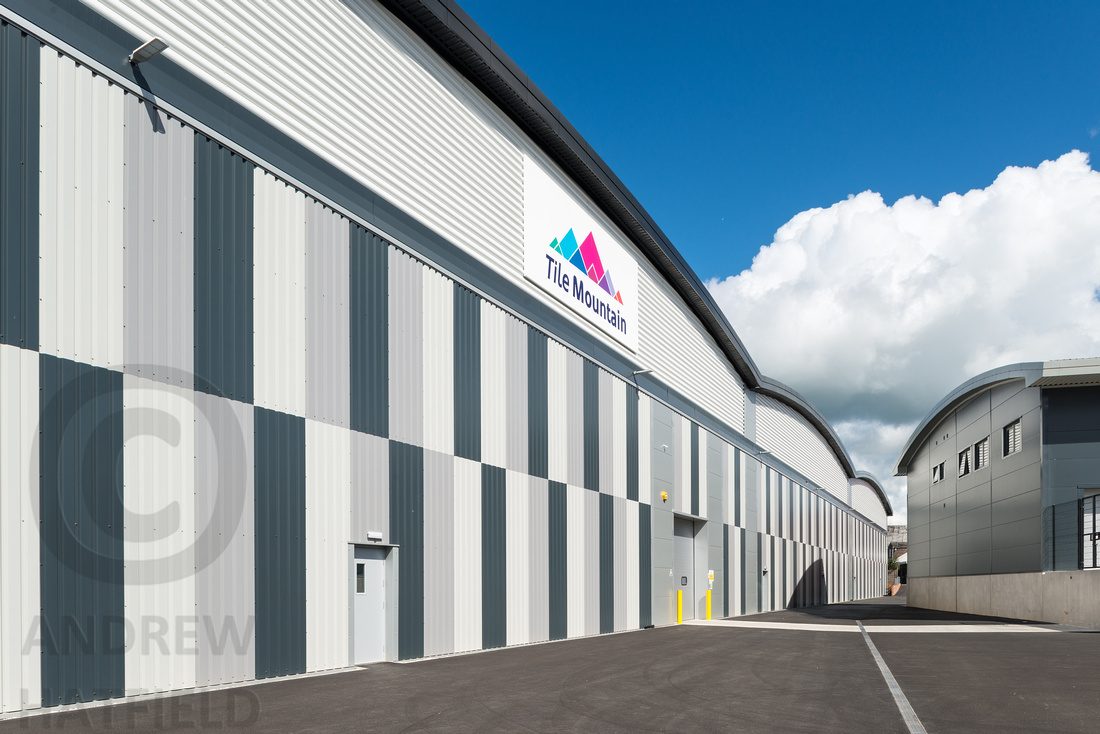
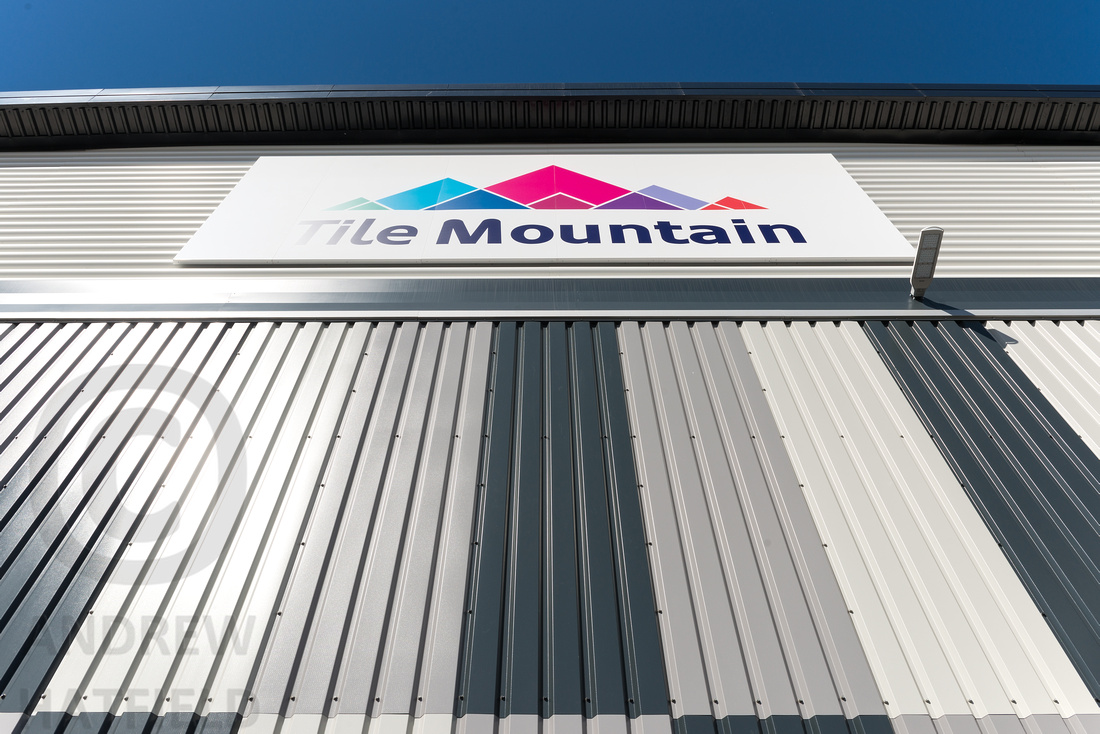
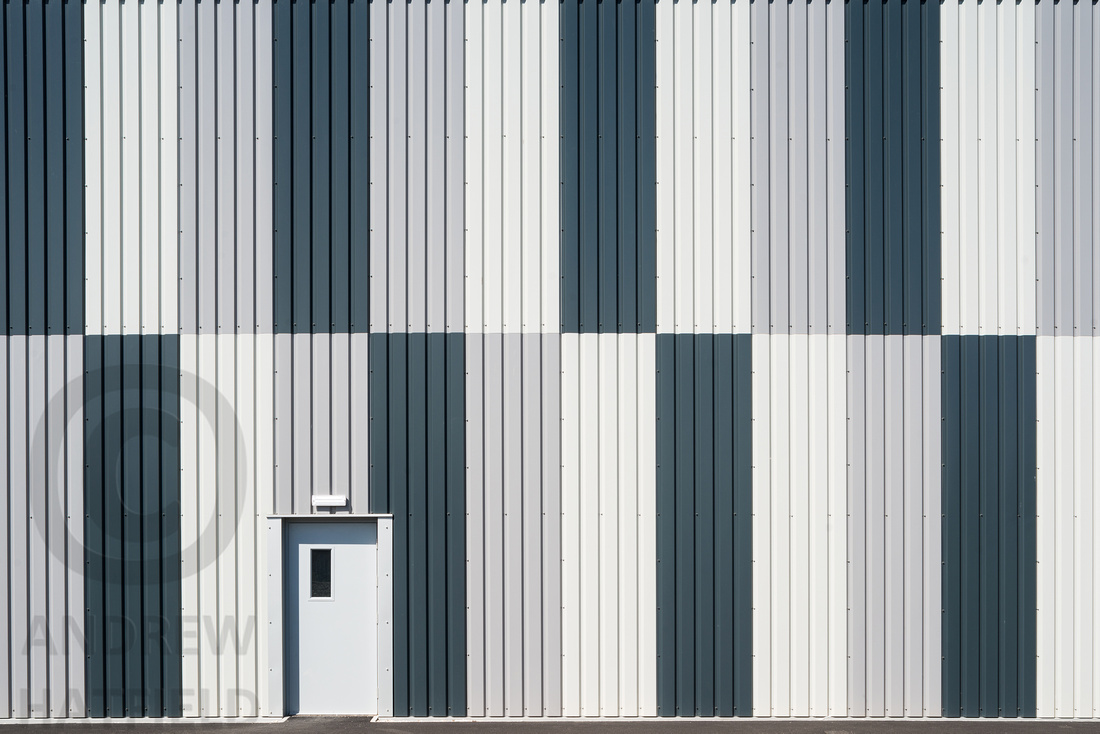

Here's an extract from Good Homes Magazine September 2017 edition featuring a shoot in Saint Albans for Architects Harvey Norman Associates and Kloeber who produced the bifold doors and windows.


After completing all of the necessary exams, flight tests and reams of paperwork submitted to the CAA I am now able to offer drone 4K video and stills work on a commercial basis. Modern drones are amazing tools and provide access to a whole new ways capturing images that would have been impossible or extraordinarily expensive to achieve.
Please get in touch if you are interested in any stand alone drone imagery or as part of a conventional stills and video package.
Here are a few film stills from a recent match day video currently in production for the Northampton Saints shot on location at the Frankiln's Gardens stadium in Northampton.

Congratulations to rhp on their recent win in the RIBA East Awards 2017 for the Combined Colleges Boat House overlooking the Cam in Cambridge. I really enjoyed photographing the newly completed building last summer and you can see more details about the award and more photographs on Architecture.com
When I give my basic photography CPD sessions about half of the people that attend don't have any form of camera other than the one on their phone. While you can get good results with a phone camera one of the problems is a lack of manual control over the settings. I recommend these phone users get some sort of camera control App to unlock the potential of their phones.
Use of something like the Camera+ App will allow you to make full use of your phone and give you a lot of the functionality of DSLR,
Version 9.1 of the Camera+ App gives you full manual control over,
Focus
Shutter Speed
Aperture
ISO
Exposure Compensation
White balance, including the ability to set the colour temp in K
It also provides useful composition tools like a display grid overlay and horizon level and the latest version allows you to save your files in RAW format to give you the largest scope of adjustment in postproduction.
Use of these manual controls is going to allow you to create much more effective Architectural imagery and provide greater scope for your creativity.
 Here are the results of a recent interior shoot featured in Mondo Arc a magazine specialising in lighting and lighting design. These images commissioned by TRILUX were used to illustrate the use of their light fittings during the refurbishment of the National Farmers Union HQ in Warwickshire.
Here are the results of a recent interior shoot featured in Mondo Arc a magazine specialising in lighting and lighting design. These images commissioned by TRILUX were used to illustrate the use of their light fittings during the refurbishment of the National Farmers Union HQ in Warwickshire.
Photographs by Andrew Hatfield
Case study project managed by Too Busy For Words, www.toobusyforwords.co.uk




Photographing Fireworks
I have been asked by a couple of people about the best way of photographing fireworks.

The first thing you need to do is get your night photography basics and equipment, right you can see some guidance on night photography lower down the blog, but the main thing you will need is a tripod.
Once you have the right set up consider how high the fireworks are going to go. The largest commercial fireworks go to about 400m high. The ones in the shot above which are still spectacular but can be brought by the public look to have gone to about 70-100m high. The people running the display may be able to give you an idea of the height they will go to. Ideally you want a bonfire or a crowd at the bottom of the frame and it’s better to get too far away as you can always zoom in a bit. Once you are in the right place focus on something at the same distance as the firework base, then switch to manual focus, you don’t want to be trying to focus during the display. Use your manual focus to focus on the area where are launched from.
When you are all set up you need to work out your exposure, and you will need to end up with a shutter speed of sufficient length that you can record the flight of the firework and the starburst in one shutter opening, on the above I used about 3 seconds. If you want to capture multiple burst just use a longer exposure. Before the display set your shutter speed to about 3 seconds, then adjust your aperture and ISO to give you the background look that you want, keep you ISO low to minimise image noise. And you won’t need a very small aperture as you will be focusing near infinity so you will have plenty of depth of field. The above was shot at f/5.6, 3seconds, ISO 100.
Then when the display starts keep shooting and try and get the timing right so that you are opening the shutter between shell launches. Also keep an eye on your exposures during the display because some of the fireworks can create a lot of light and may cause you to over expose. Be ready to select a smaller aperture if things start to look over exposed.
http://www.andrewhatfield.co.uk/blog/2014/10/architectural-photography-at-night
The new Combined Colleges Boat House serving Selwyn College, Churchill College, King’s College and Leys School opened this summer. Designed and project managed by rh partnership of Cambridge the boat house over looking the river Cam was completed for a project value of £2.5 million and replaces the previous dilapidated boat house on the same site. Due to the high risk of flooding in the area all habitable rooms are located on the first floor, accommodation on the first floor comprises a combined rowing gym and individual clubrooms for the individual colleges.
You can read more about the project on the Cambridge News website.


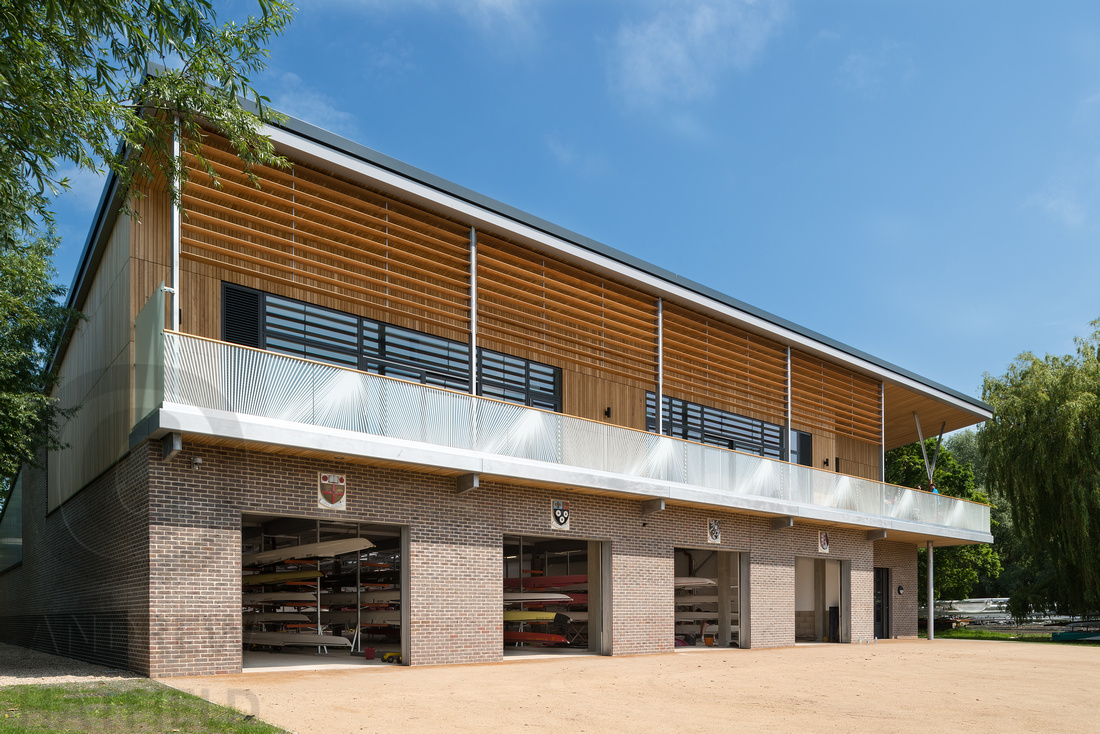

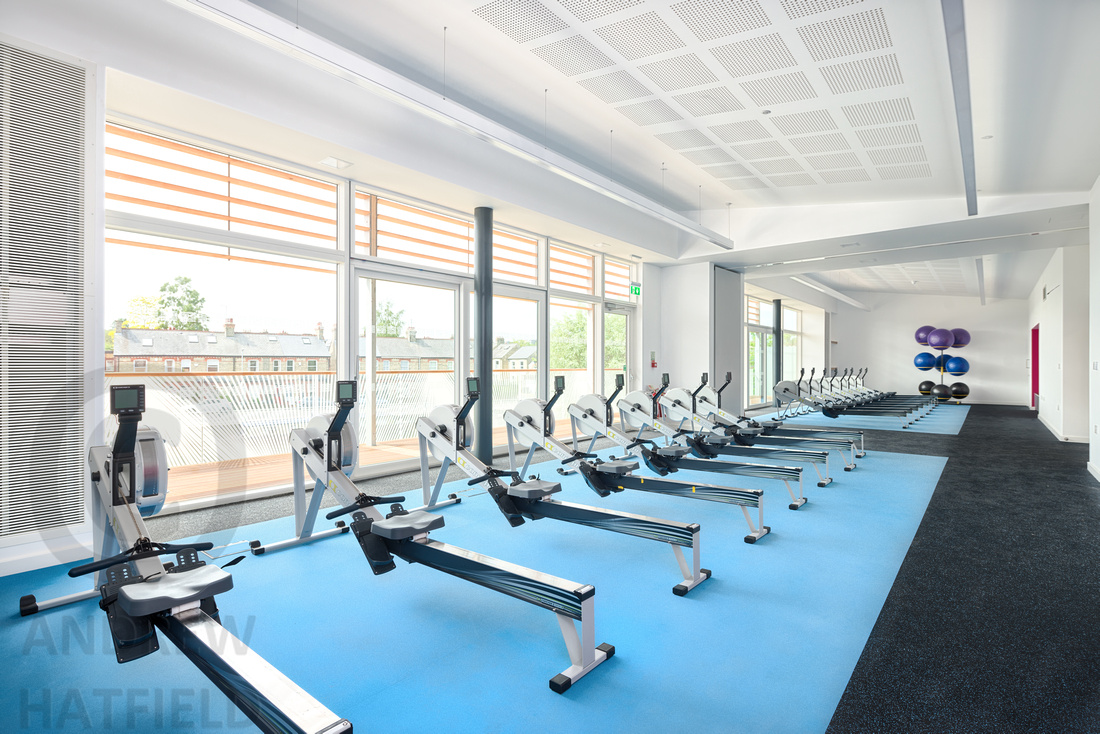

After 200 years the refurbished Woodberry Wetlands near Finsbury Park has opened to the public. The centrepiece of the new nature reserve run by the London Wildlife Trust is the new café is based in the old Coal House. The refurbishment of the coal house and public access work to the reservoir was carried out Bolt & Heeks and official opened by Sir David Attenborough on the 30th April. The scheme was designed by kaner olette Architects and has been submitted by Allen Scott for a 2016 Landscape Institute Award.

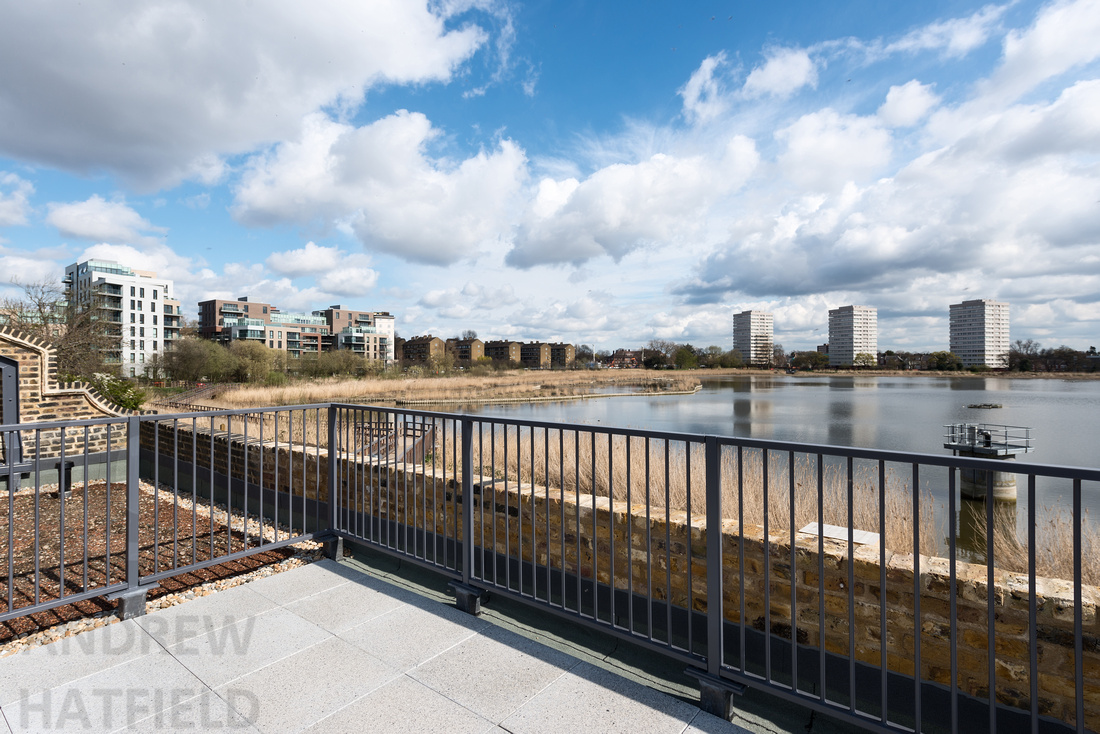
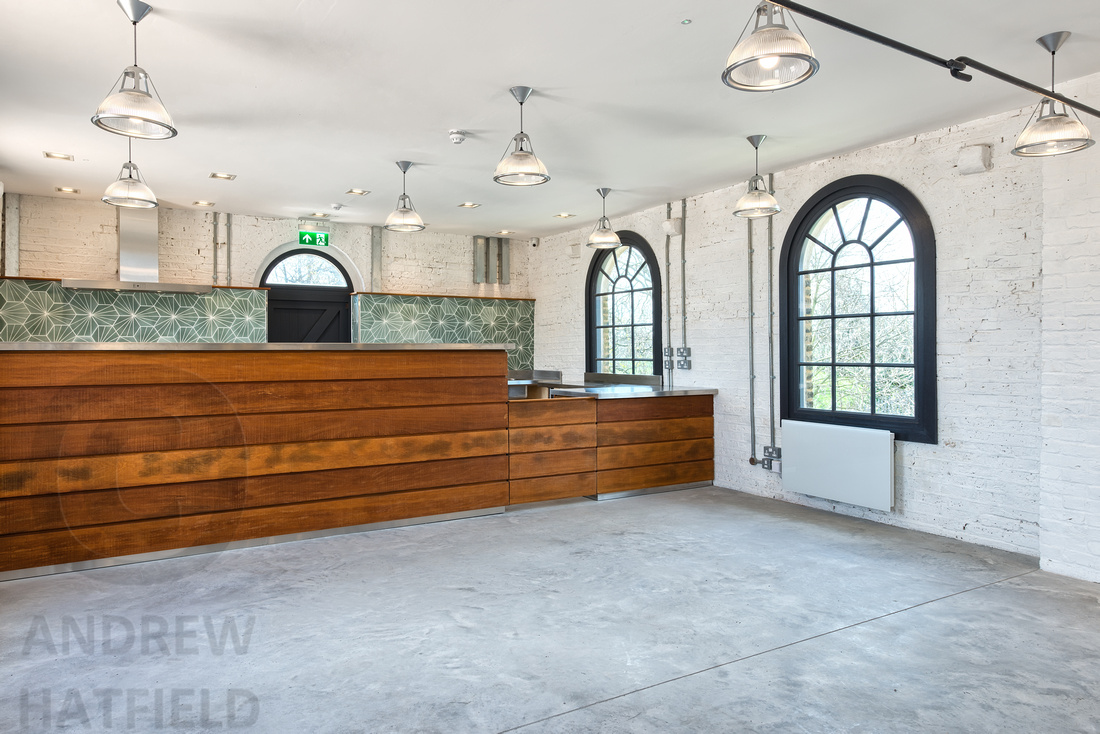

Congratulations to kaner olette Architects for their recent win in the 2016 RIBA South East Regional Awards with the Gateway Café at Peacehaven.

Entries for the 2016 RIBA UK awards are now closed, my images have been used for 2 submissions this year, the Peacehaven Big Parks project and the new Crausaz Wordsworth seminar building at Robinson College, Cambridge. The awards will be announced in June 2016. From a photographers perspective the RIBA Awards should be commended as they are one of the few awards that require the photographers consent for the submission of their images.
Big Parks, Peacehaven, Kent
The Gate way Café in Peacehaven, Kent was designed by Kaner Olette architects of Tunbridge Wells and my original commission came from Crofton Design consulting M&E engineers on the project. This Café building has already won a Constructing Excellence Sustainability Award and a category winner in the AJ Retrofit Awards 2015. Big Parks is a visitor Café was forms a gateway to the new Big Parks community park a new recreational space in Peachaven, Kent.


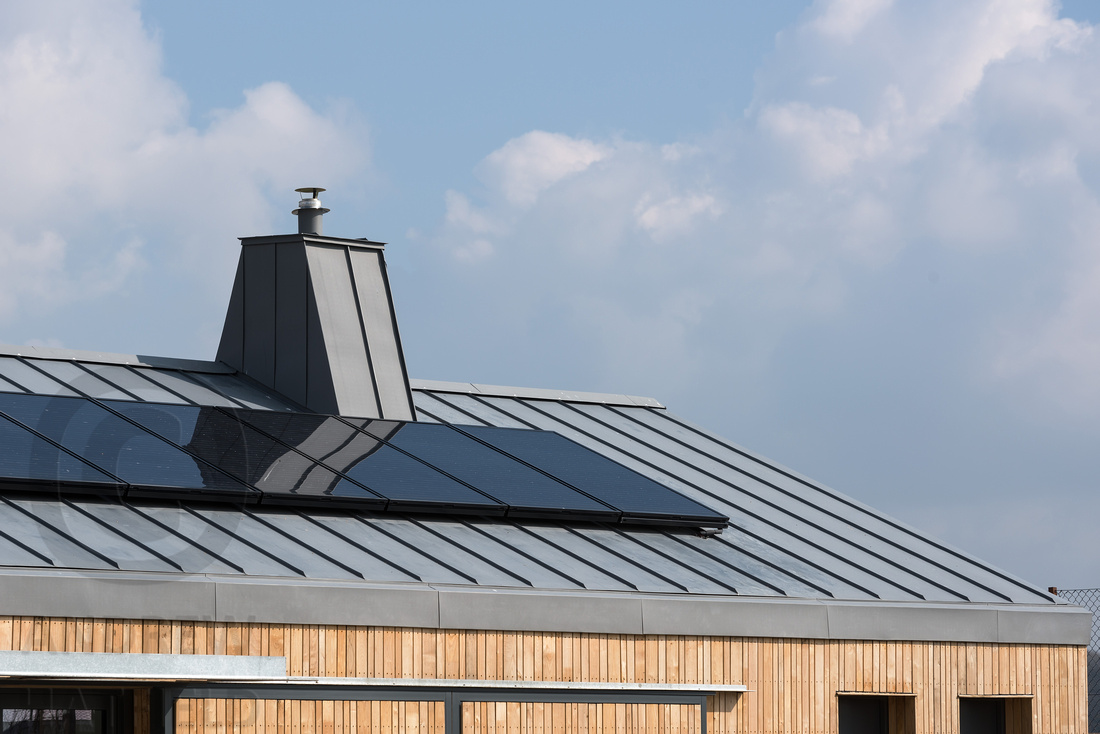

The Crausaz Wordsworth Building, Robinson College, Cambridge
The new dedicated seminar building has been built in the grounds of Robinson College and opened in 2015. The building was designed and the photographs commissioned by rh Partnership of Cambridge and Brighton.

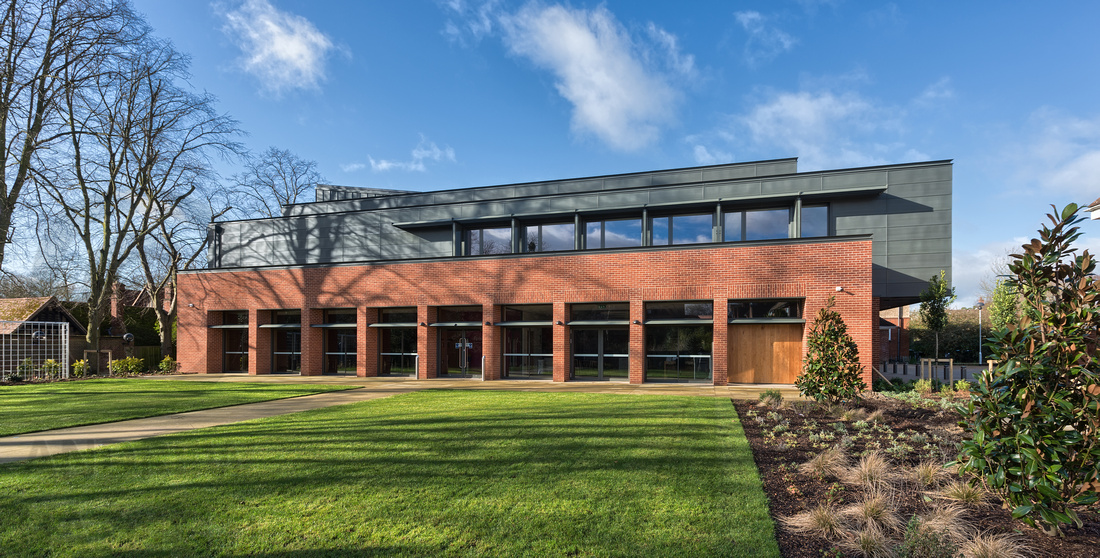
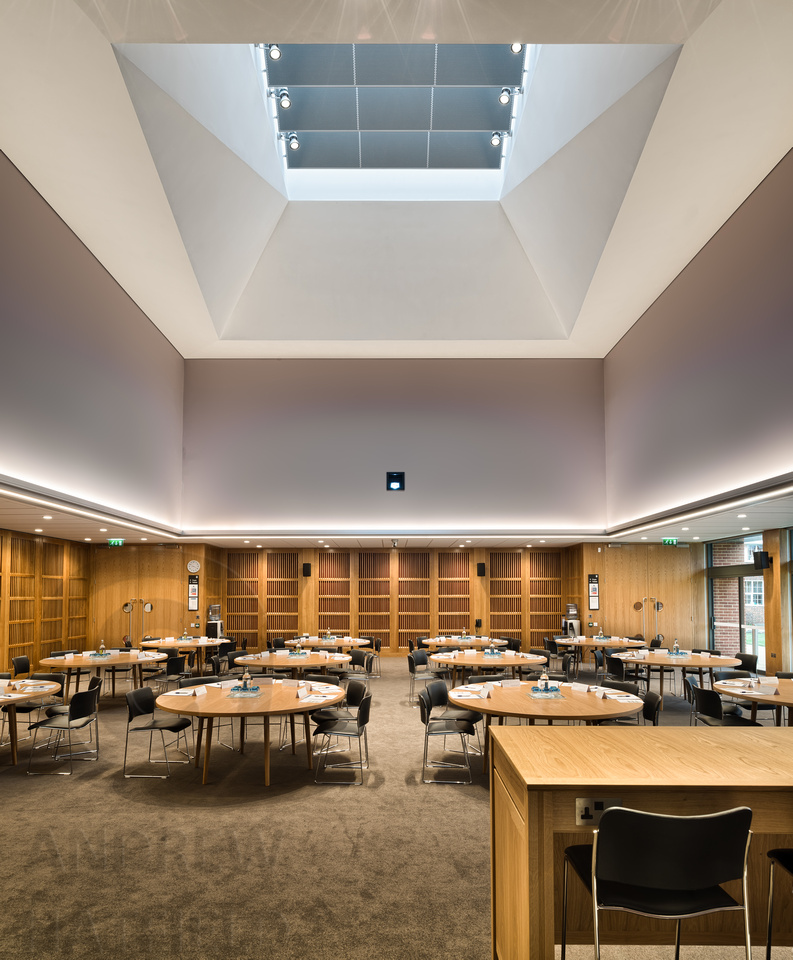
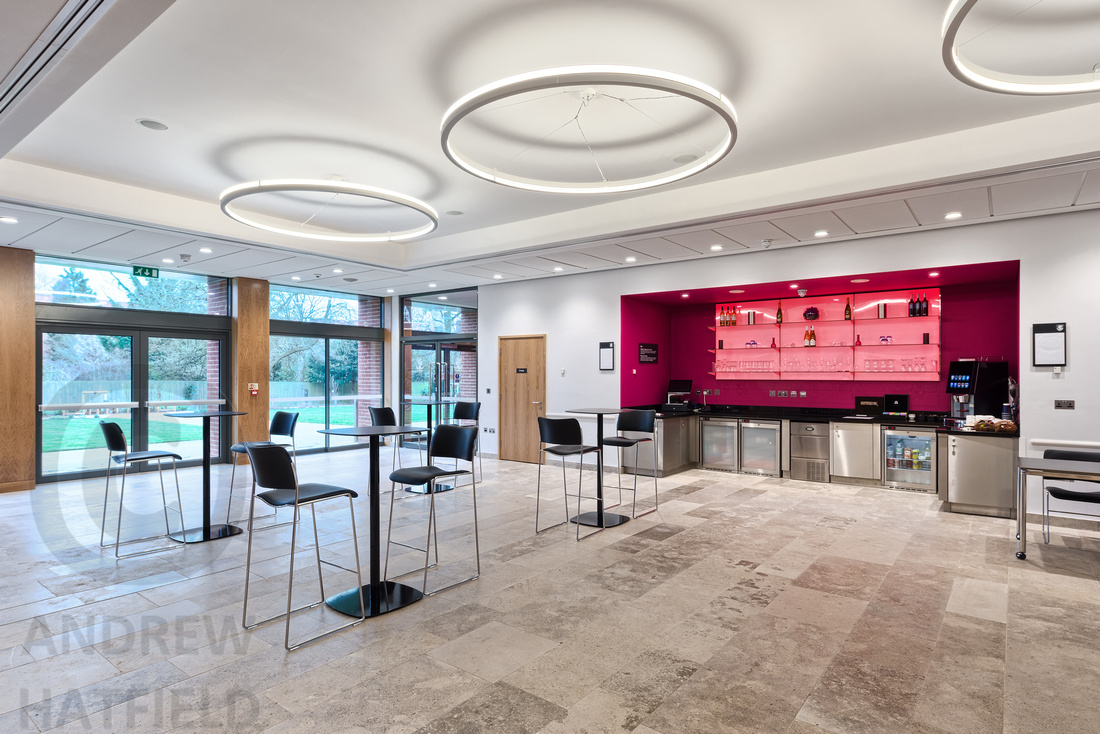
In addition to occasional lecturing on photographic techniques and presenting Architectural photography CPD sessions I will be running several one day courses on DSLR photography over the spring and summer of 2016. The courses will be produced and presented in partnership with Zoe Plummer a Commercial Photographer and Photography Lecturer.
These courses will be aimed at amateur photographers wanting to lean more about and improve there skills in relation to,
- Composition and Framing.
- Narrative.
- Creative use of depth of field.
- Getting the correct exposure and the use of histograms.
- Colour correction and White Balancing.
All of the subjects would be covered over a single day through the use of short lectures, practical sessions and group critiques.
Courses will be week days and located in the East Midlands Area.
Groups will around 10-12.
Exact dates, prices and locations to be confirmed.
Central London Architectural and Interior Photography courses are also planned for later in the year.
If you would like to know more or have any comments about possible course content, locations etc. we would love to hear from you.
It has been a while since I have been out to photograph things purely for the pleasure of just seeing and capturing something. When studying photography and working full time as a professional photographer the simple interest in aesthetic photography can be easily lost. Because of this I think it's important to put the work aside though and allow yourself to just be creative.
I particularly like woodland when it's clad in flat overcast light, compressing the dynamic range to something your camera can easily capture. This means the scene you can see will be very similar to the scene you can capture and the dull flat light allows to compose without having to consider blown out highlights and impenetrable shadows. When creating work for purely for aesthetic reasons I often compose and crop for a square format even when shooting digitally, I have always loved this format since I had to master it with my 500cm.
Here is a series of five monochrome images captured at the end of December 2015.


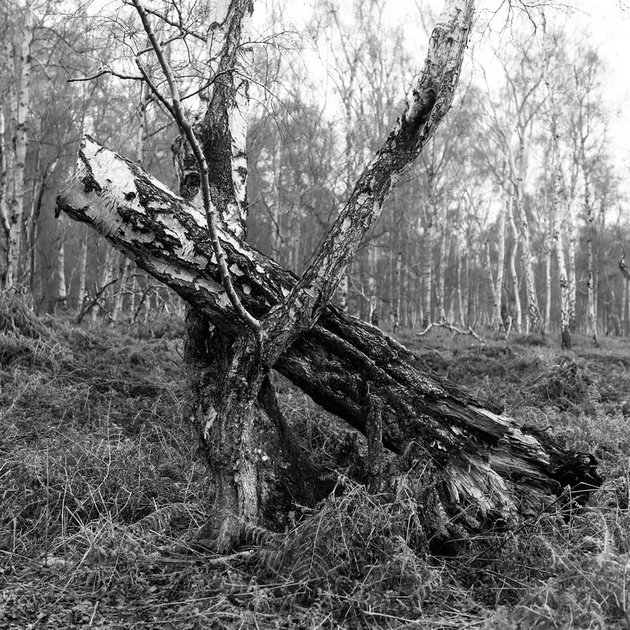
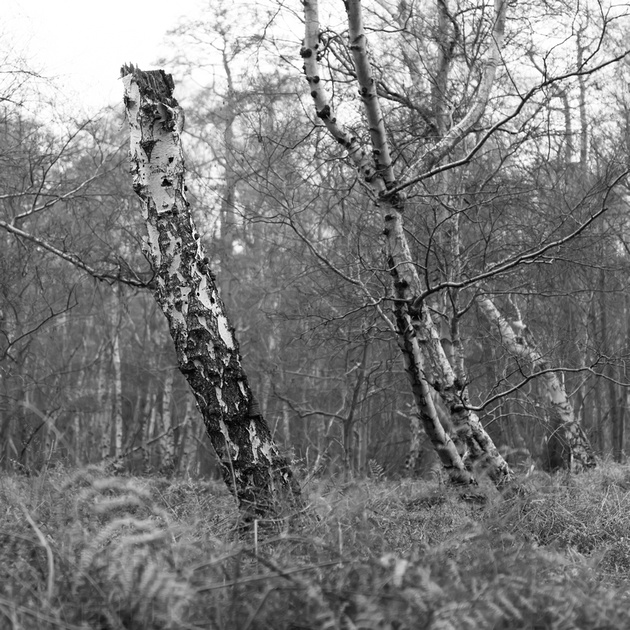
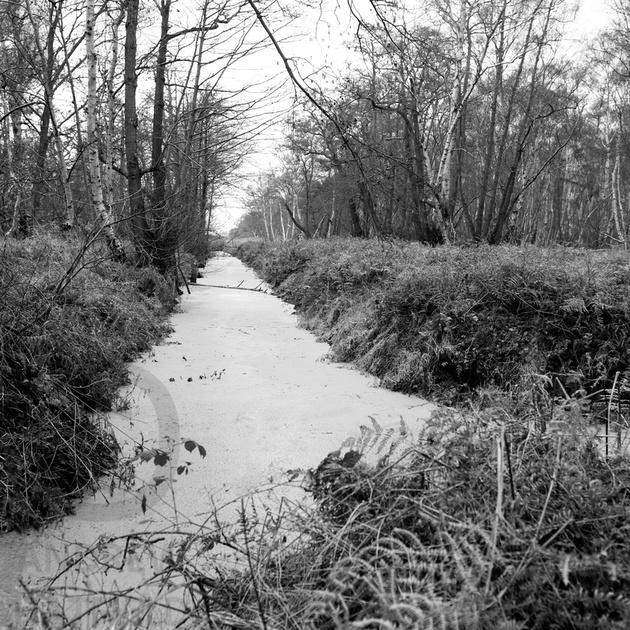
I was recently commissioned to photography a newly refurbished apartment by Interior Designer Sandra Boitel of didiE Art & Decoration, Zurich. The apartment was located in the heart of Mayfair London and unfortunately for me on the 4th Floor with no lift, as I was passing the 3rd floor for the second time loaded down with equipment I promised myself I would go through and rationalise all of my kit. One of the problems with being a professional photographer is that you need to take back up kit or have a work round for most failures. This means you end up taking almost twice as much stuff as you need and on most shoots it is never even unpacked.
Anyway back to the shoot, Sandra the designer wanted to show the affect of her lighting scheme on the interior. This meant using a high proportion of the ambient lighting. Unfortunately for me most of the lighting was provided by vintage Edison type bulbs which produce a very orange light at around 2400K as opposed to the normal 3200K for tungsten lighting, also this type of lighting has quiet a narrow colour spectrum and therefore gives quiet poor colour reproduction. To try and maintain the ambient look I applied local fill flash only and covered the flash heads with ¼ or ½ CTO Orange gels this allowed some of the true colour of the furniture to be brought out without destroying the natural ambient look. It would have been much easier to have added more flash but I think this would have destroyed the natural look Sandra was looking for.
I have been spreading the word in the last couple of weeks, by running a full day Architectural Photography workshop at the University of Northampton, and 2 Architectural Photography CPD sessions at London architectural practices. The CPD session this week at GRID architects in SE1 was particularly well attended with 25 people ranging from enthusiastic DSLR users through to dedicated iPhone Photographers. The CPD session ran through the complete process of capturing an architectural style external and interior images from initial concept through to post production.
Although there was a lot to get through people at all levels took something away from it, here is some of the feedback from the staff at GRID.
"People don’t usually comment on the CPD’s unless they’re really bad which makes it even better that I’ve had positive feedback from a number of people who found it informative and well presented. It’s good to get someone coming in who teaches us something useful, understands our way of thinking, and isn’t trying to sell something to us." Stefan
"The composition part was particularly relevant as it applies to so much of the work we do, not just the photography. Also, our bid presentations always rely heavily on photography to describe both the existing context and proposals so I think the range of material you covered was really good." Andrew
I don't make anything from the CPD sessions, and so I am only able to offer a limited number, but get in touch if you would like the either the 1 hour CPD session on the Theory and Practice of Architectural Photography or the Advanced Architectural Photography talk.
The Rule of thirds and it's use in Architectural photography
Nikon Professional Services
People are quick to complain about poor service these days, but don’t often report good service when they get it, so I just thought I would mention my recent dealings with Nikon Professional Services (NPS).
On a recent shoot my old Nikkor 70-200mm VR1 fell out of my bag about 1 onto a concrete drive. Apart from a slight dink at the base all look good apart from but when I went to use the lens the VR system was a bit sick causing the image to randomly move around in the lens. I wasn’t too worried about this as I normally shoot from a tripod without the VR, but was worried about the focus alignment. It was time to send it back to Nikon for a bit of TLC. this lens has had a hard life having been repaired before when it and a camera body were dropped from a speeding motor bike, but that’s another story.
As I was off for a couple of weeks over Christmas it took the opportunity run my other AF lenses into Nikon London for a quick check and service, armed with my 14-24mm f/2.8 and 24-70mm f/2.8, as well as the ailing 70-200mm I called in on the morning of 22nd Dec. To my surprise I received the service estimates on the afternoon of the 22nd and morning of the 23rd , after accepting these by email both of the shorter zooms were lubricated, had their focus alignments checked and were back with me on the 23rd and 24th of Dec.
The longer zoom required some parts from Japan which were going to take a while to arrive. I didn’t have a job that needed the longer zoom for a couple of weeks so that wasn’t a real problem, but I let NPS know when I would need it by. As that date drew near I contacted NPS for an update and as they were still awaiting parts they sent me a loan 70-200 at no cost to cover the intervening period. Unfortunately they were still struggling with parts supply so they have just replaced my 7 year old lens with a 70-200 VR2 lens for the cost the old lens repair.
Very pleased with service, sensible prices and the replacement lens. Thanks to Rob and the other staff at NPS.
This is a quick review of these 2 relatively new Yongnuo products from and interior photographers perspective. This is not meant to be a detailed review of the TX unit and flashes as there are already lots of good reviews about. It’s really to fill in a few gaps and answer some of the questions I had before buying the equipment.
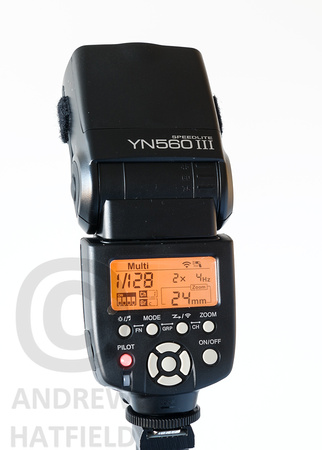 When I started photographing interiors I used Nikon strobes but working in small spaces, shoots can be really hard on flashguns. The stands are constantly knocked over as they are placed behind doors or just as a consequence of having too much kit in a small space. Often flashes are placed on top of doors, inside light fittings, log burners, ovens etc and all these things can quickly lead to irreparable costly damage to your precious strobes. The need to replace a £350 flashgun can make quiet a dent in a day’s fee so these were quickly replaced by a set of Nissin Di622 MK1 flashes. These could be brought for about £100 new or £60 S/H and combined with a set of Yongnuo RF 602 TX RX units have worked well for the past few years. Nissin parts are readily available and broken feet or cases are quickly and cheaply replaced after a quick email to Kenro the importers.
When I started photographing interiors I used Nikon strobes but working in small spaces, shoots can be really hard on flashguns. The stands are constantly knocked over as they are placed behind doors or just as a consequence of having too much kit in a small space. Often flashes are placed on top of doors, inside light fittings, log burners, ovens etc and all these things can quickly lead to irreparable costly damage to your precious strobes. The need to replace a £350 flashgun can make quiet a dent in a day’s fee so these were quickly replaced by a set of Nissin Di622 MK1 flashes. These could be brought for about £100 new or £60 S/H and combined with a set of Yongnuo RF 602 TX RX units have worked well for the past few years. Nissin parts are readily available and broken feet or cases are quickly and cheaply replaced after a quick email to Kenro the importers.
There were a few problems with the Di622 /RF 602 set up though. The main one being that the power of each flash had to be adjusted separately so walking to 4 or 5 flashes dotted around the shoot to adjust the power of each one was a constant pain, particularly when taking bracketed shots. Also the focus of the flash cannot be adjusted when it’s not fitted to the hot shoe of a camera, placing a greater reliance on having the correct modifier, and finally the RF 602 TX unit the RX unit and the flash heads all took different batteries. Meaning 3 different sets of spares had to be taken to each shoot. Finally the Di622 would power down after about 10 mins of inactivity and would often have to be revisited to turn them back on. I was happy with the set up at the time as it offered the best compromise of cost, portability and reliability available at the time but technology continues to develop offering more features at lower cost.
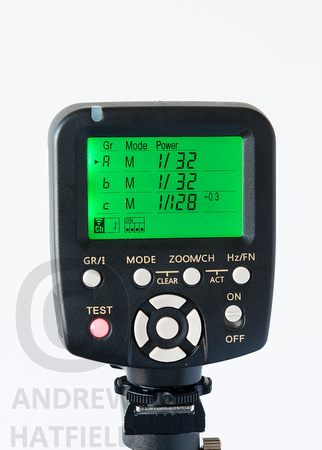 I have now changed over to the Yongnuo YN560-TX Manual Flash Controller and Yongnuo YN560 III Speedlites the controller is about £30 and the flashes about £45 from Amazon.
I have now changed over to the Yongnuo YN560-TX Manual Flash Controller and Yongnuo YN560 III Speedlites the controller is about £30 and the flashes about £45 from Amazon.
The build quality of the new kit appears particularly good and big step up from the build quality of the old Yongnuo products and that offered by the Di622’s. The features and benefits of the new set up when compared to my old kit are fairly significant.
Each flash includes its own built in RX unit removing the need for separate RX units, reducing the amount of kit to carry.
The flash and TX controller use the same rechargeable AA batteries.
The controller can be used to remotely adjust the individual power and zoom of up to 6 groups of flashes, each group can contain any number of flashes. Zoom from 24mm – 105mm and power from 1/128 in 1/3rds or full stops. It is simple to set each flash to its individual group. It is not possible to test fire each group individually though so you need to lay out the flashes in a logical manner to make sure you don’t waste time remotely adjusting the wrong flash unit.
One of the most significant advantages of the new units is the adjustable flash frequency. With the old Nissin units you were limited to using a single light pop for each shutter operation. This limited the amount of light you could apply to the scene regardless of the exposure time. So for instance if you wanted an exposure time of say 8 seconds to capture the right level of ambient light and wanted to supplement this with some local fill flash your were limited to a single flash pop. Once the Di622 was up to full power the only option was to use multiple flash heads to increase the local light levels. With the YN 560 combo you can set the frequency and number of flash pops, and so with our 8 second exposure we could set the flash and controller to supply multiple pops in that 8 second exposure. Using the Number and Frequency options we can specify a number of pops or just keep firing at say 10 Hz or for the duration of the shutter opening. Total number is adjustable from 1-40 and the frequency is adjustable from 1-100 Hz. Obviously this flexibility is limited by the flashes recycle time to one flash every 3 seconds when using the internal battery pack, but still offers a vast improvement in the available power available.
The TX unit is also able to fire the Nikon camera via the TX units sync port and accept a signal from a Yongnuo RF 603 TX unit and so a single remote press from the RF 603 can operate the shutter and fire the flashes at the same time.
The standby time and power off time of the strobes are adjustable with a few options including On all of them time, which is a real bonus.
The TX unit and Flash/RX unit both have locking tripod feet where as the old RF 602 units I used did not lock.
I have used the new set up on a couple of shoots so far and it has all worked flawlessly. The TX range is good working though multiple stone walls. Breakages are likely to be more expensive than the Nissin units as I am guessing it is going to be difficult to get Yongnuo spare parts although at £40/unit this is not the end of the world.
A couple of other points that aren’t really relevant to interior photography but worth noting are the TX unit can also work as an IR focus assist light if needed and the Flash units can be run from an external battery pack to reduce the cycle times.
I will try and report back on long term reliability but the build quality of the units and the past reliability of my Yongnou RF 602 1nd 603 kit suggests there may not be much of a problem.
Night Photography - Part 2
I've had a couple of queries about the best time to photograph buildings at night. This is briefly discussed below in Night Photography but I will try and expand on it.
When photographing landscapes there is a fairly long period around sunset when the light is atmospheric and gives a load of different lighting effects that we can use as photographers. We can do this because we can constantly adjust the camera as its getting darker, to optimise the exposure for falling light levels, this period is often referred to as the Blue Hour.
When photographing buildings that are lit by artificial light we have very little flexibility in the timing of the shot, as the interior light levels are the building are fixed and don’t vary with the falling external light levels. What we need to do is pick an exposure value (aperture, shutter speed and ISO) that gives us the interior exposure we want. We can generally get the right level soon after sunset. At this point the sky will still be quiet bright and over exposed, but the building interior will be correctly exposed. All we need to do then is wait as the external light level falls to the point where it complements the interior light levels and provides the look that we want. This is exact point is sometimes difficult to judge because your eyes will be used to the dark by then. I normally continue shooting to the point when the roof line of the building loses its definition and merges with the dark sky beyond.
You could be stood there for half an hour to get the right exposure so replace your lens cap between shots and keep a check on lens condensation especially if you are near water.
I recently had a day out to visit a few exhibitions around London including,
Designing the 20th Century: Life and Work of Abram Games
Entry £7.50
The Jewish Museum 8th September 2014 - 4th January 2015,
129 – 131 Albert Street, London, NW1 7NB
Nearest Tube: Camden, Northern Line
http://www.jewishmuseum.org.uk/abramgames

|

|
| See Britain by Train, Abram Games | Grow Your Own Food, Abram Games |
The exhibition was created to celebrate the centenary of Abram Games birth and features work from his time as a student, through his military career right through to his death in 1996. Initially you may think you’re not familiar with the work of Games, but it soon becomes clear that you will have already been exposed to much of his iconic work and many of his works are already lodged in your mind at subconscious level. Once exposed to the exhibition you can see the influences of his work in many of the advertising images that surround us today. Well worth a visit.
I can also recommend the Cafe, good Latte for £2.40 and the Israeli Special (stuffed vine leaves, houmous, pitta bread and olives) at £5.80 was very good.
After Abram Games we moved on to the RIBA to see an exhibition on the work of Edwin Smith
Ordinary Beauty – The Photography of EDWIN SMITH
Entry Free
10th September 2014 – 6th December 2014
RIBA, 66 Portland Place, London, W1B 1AD
Nearest Tube, Great Portland Street, Circle, Hamersmith & City and Metropolitan lines
http://www.architecture.com/Explore/ExhibitionsandEvents/EdwinSmith/Explore/ExploreEdwinSmith.aspx

|

|
| Winter Smoking Room, Cardiff Castle, Edwin Smith | Scala Regia, Royal Palace, Caserta, Edwin Smith |
The exhibition comprises over 100 of Edwin Smiths black and white prints from the RIBA’s collection of over 60,000 of his negatives. The purpose of Architectural Photography is generally the documentation of a structure and to show how it interacts with its users and surroundings. Good photographers can add narrative to convey extra detail about the design, use, construction etc. Smith takes this to another level with the creation of work that is engaging in its own right, the subject matter is almost secondary to the framing, composition use of light, shade and dynamic range. The range of shades produced in the finished prints shows not only a mastery of photography but also of the development process. As with the work of Ansel Adams it’s clear that the finished print was clearly visualised by Smith at the time of capture. Anyone with an interest in photography can learn much from the study of Smiths’ work.
I have reproduced a couple of Smiths images here but even my high dynamic range monitor does’nt do these justice.
As an added bonus you can see some of my own work displayed in the top floor exhibition on the Sterling Prize.
The coffee and cake on offer in the ground floor cafe is fairly unremarkable.
Following the visit to the RIBA we move on to the barbican centre,
Constructing Worlds: Photography and Architecture in the Modern Age
Entry £12
25th September 2014 – 11th January 2015
Art Gallery, Barbican Centre, Silk Street, London, EC2Y 8DS
Nearest Tube, Barbican, Circle, Hamersmith & City and Metropolitan lines
http://www.barbican.org.uk/artgallery/event-detail.asp?ID=16264

This is large collection of work from
Berenice Abbott
Iwan Baan
Bernd and Hilla Becher
Hélène Binet
Walker Evans
Luigi Ghirri
Andreas Gursky
Lucien Hervé
Nadav Kander
Luisa Lambri
Simon Norfolk
Bas Princen
Ed Ruscha
Stephen Shore
Julius Shulman
Thomas Struth
Hiroshi Sugimoto
Guy Tillim
Unfortunately for me the exhibition was focused on the documentation of vernacular architecture or the use of architecture within a socio economic context. I was soon approaching the images with the eyes of a tourist making mental note to remove destinations from my bucket list rather than studying technique, composition, use of scale etc.
The Constructing Worlds exhibition while very thought provoking uses photography as a vehicle rather than an art form in its own right the work of Edwin Smith conveying the work of the Architectural photographer in a much purer form. That said it is still well worth the visit to see such a large body or work exploring Architectural Photography from the 1930's to the present day.
Night Photography
As we get in to autumn, the clocks go back and the weather is generally worse, night photography can be a more effective option than daylight when photographing architecture. Even during winter daylight periods the sun is so low down that you often find large parts of the building shaded by adjacent buildings, again making night photography the better option.
While night photography is basically the same as day photography in that it’s about composition and lighting there are quite a few subtleties that can make the difference between a good shoot and bad shoot.
Extra Equipment
In addition to your normal architectural photography kit you will need a few extra bits.
Tripod – If you don’t use a tripod all the time you will really need a tripod for night photography, yes you can balance you camera on handrails and lean it against sign post etc. but if you want flexibility in composition and framing a tripod is essential.
Remote Shutter Release – Again it’s a good idea to use a release during the day but really important when using longer shutter speeds at night as any camera movement will affect image quality.
Lens Hood – A lens hood helps reduce glare from adjacent street lights etc. and also reduced the risk of lens misting.
Torch – Always useful at night but take one with a low power setting as you can upset you night vision by shining a bright light onto your camera close to your face.
Plastic Bag – A plastic bag is really handy for covering your camera and lens while it’s on the tripod to keep the damp of it and prevent misting of the lens and eye piece. I tend to use supermarket carrier bags because the handles hook onto the tripod easily. They can act as a bit of a sail in the wind though so weight your tripod or don’t use them if it’s windy.
Timing
I often hear people talking about the Golden Hour or Blue Hour which is the period around sunset when you get that nice orange light, sunsets and long shadows. This only really applies to landscape photography though as you can use longer and longer exposures as the ambient light levels drop to record the landscape detail. Unfortunately when we’re photographing architecture it’s filled with and surrounded by artificial light and we have a much smaller window of opportunity. Ideally we want to see some light in the sky as this will provide edge definition to our building, we don’t normally want the building to merge into a black sky. Photographically the best time is when the ambient light in the sky is bit lower than the artificial light coming from the building by say 1 – 2 ev, but light enough to give you edge definition.
I normally find that the best light available is about 45 – 60mins after sunset, depending on the amount of overcast or the direction you are looking, if you are looking towards the setting sun the sky will be lighter than looking away from the setting sun. The period of ideal light is really short at about 10 – 15 mins.
If you are in a heavily built up area and the weather is overcast it often doesn’t get that dark because the street lighting is reflected from the cloud base, giving enough light to provide edge definition. You are restricted to a yellow sodium colour backdrop though and an earlier shot would possibly have allowed you to retain a bit of blue in the sky, even if overcast.
Technique
It’s generally best to check out the area in daylight and get a good idea of the shots you want as you will often only have about 10 minutes to get that perfect sky you don’t want to be composing your shots out then. Think about the fact you are using long exposures and the way the location will have an impact on those. If you are working on bridges or near tram lines then vibration of the ground can be a real issue.
Shutter – Even with the best tripod you will probably get some camera vibration as you will be using shutter speeds of many seconds. Use your remote shutter release and the mirror up setting (MuP) if you have one and try and use your body to shield the camera from the wind if there is any.
Aperture - Use a depth of field calculator to pick an aperture setting that gets you the depth of field you want but no more. People often use much smaller apertures than they need resulting in much longer shutter speeds, causing more camera shake and spiky stars from streetlights etc, the smaller the aperture the more harsh and spiky these stars will be. Generally longer shutter speeds also result in more image noise. If you have a long exposure NR setting make sure it’s turned on.
Metering - Getting the exposure right is normally a bit of trial and error but I normally spot meter on some of the brighter parts of the image to get a starting point, if you use an auto exposure setting you will often find that your camera over expose to try and capture more of the dark sky detail.
White Balance – I normally set mine to daylight and tweek in post production if you leave it set to auto you will get all sorts of weird results.
Misting – Keep your lens cap on and your camera covered when possible particularly if you are working near water and regularly check the front of the lens for condensation. Your lens can get misted enough to spoil a good image before you notice it looking though the camera.
The public – you may have been outside for quite a while and you night vision will be working well. Members of the public though may have just left brightly lit offices and shops and they may not notice your black tripod and camera bag, try and keep out of busy traffic routes and use street furniture to create natural barriers.
Personal safety – consider the risks of working at night, try and take someone with you if you think you may be at risk.
I was recently commissioned to photograph the new Bella Freud point of sale perfume display on the ground floor of Harvey Nicholas, London. It is a great display designed and installed by Arken of Newmarket, unfortunately its made of black and highly reflective Perspex surfaces. These kind of surfaces are particularly difficult to light and composition is made more complicated by the need to manage unwanted refection. Jobs like this need very detailed inspection of the image previews to minimise unwanted reflections of clients, staff and kit. Just what you need on an early morning shoot starting at 8.00 and finishing before the store opens to the public at 10.00. The use of a remote camera release is always a real help in these situations allow photographer reflections to be minimised. Minor tidying up was required in Photoshop CC to remove a couple of light stand feet but everyone was pleased with the finished result.
Last week I was working at 24 Monument Street, London documenting the work of Eltherington a specialist architectural metal worker, they had recently refurbished the link bridge and all the buildings metal work with new stainless steel panels, soffits, handrails and trims. The problem with metal work is that brightness, and colour is a product of what’s reflected in the metal work rather than the metal work it’s self. So on this shoot the compositions were largely dictated by picking locations where the metal work reflected light surroundings. Shooting towards Lower Thames Street as white vans went past proved the most effective way of getting the reflection needed in the first picture. The shoot finished off with a trip to the top of the Fire of London Monument to shoot down on the building. A note when planning this type of job don’t leave the 311 step Monument climb carrying a load of gear until the end of the day.
I’ve recently undertaken some part time lecturing at the University of Northampton. The University approached me and asked me if I could put together some lectures on Architectural and Interior photography for 1st year BSC(Hons) Architectural Technology and Interior Design Students. I was pleased to be invited to do this as I think photography is a particularly useful skill within the design and construction industry. Even a basic knowledge can allow the effective capture and documentation of your own work while improving your ability to convey ideas and narrative to others.
Over the past few weeks we have covered narrative, composition, verticality depth of field and started to look at the tricky subject of lighting models all through a series of lectures and practical sessions. It’s interesting to see how quickly people can start to develop a set of skills when subject to concentrated learning.

Here is a selection of images from a recently completed interior fit out in Queens Gate, London. The shoot was commissioned by Landmark Interiors following the successful refurbishment of the location for Frasers Hospitality. The building contains 105 luxury serviced apartments and is located in Kensington.
The refurbishment makes good use of the original Victorian structure with gallery bedrooms in many of the suites which retain their original high ceiling levels. The suites look particularly good and like the way the catering facilities and gallery bedrooms have been integrated to create something that feels much more stylish than the average hotel suite.
I have recently rationalised all my kit for this kind of interior work allowing me to get all of my speedlights, stands, light modifiers, tripod etc into one albeit huge roller bag. After months of looking I settled on a Bowens lighting bag which has made getting around on the tube much more practical, I am hoping the small wheels can take the mileage.
Here's a few images from a recent trip to the Lasalle Investment Management Head Quarters situated in Mayfair, London. The recent remodelling and refit designed by Consarc allowed the consolidation of 165 staff onto one floor through the use of flexible variable density work spaces, with a nice central break out area.
From a photographic point of view it was nice to be working in an evenly lit space with consistent colour temperature across the office. With a space this size it would be really disruptive and expensive to import lighting and so it was good to be able to concentrate on subject and composition without having to work around patchy lighting with inconsistent colour temperature.

|
|

|

|

|
|
I’ve always been interested in photography’s ability to distort the passage of time within a single frame. Time-lapse photography allows these distortions to be used to even greater effect as layer upon layer of is built up. Current technology now allows us to take Time-Lapse photograph to another level by introducing movement into what were always static shots. I have been experimenting with new kit and techniques for the past couple of months and am now happy with the results.
Here is a short clip shot at the open evening of the new Milton Keynes Super Casino.
The Lowry Hotel in Salford, Manchester was built about 12 years ago for Rocco Forte Hotels and for a long time was the only 5 star Hotel in Manchester.
Consarc were the project architects and they wanted the development re-photographing to show how well the design was wearing and how it had stimulated the urban regeneration of this former industrial Chapel Warf area.
This was the first real outing for my Nikon D800 and the 14 stop dynamic range was a real help when photographing the white painted Calatrava designed Trinity bridge in the bright sunshine.
The Hotel and bridge still look great and this more than made up for the 20 hour working day.

|

|

|

|
For the past couple of months I have been working on the photography for the new Natural Elements Flooring website. The initial enquiry came from Greg at Natural Elements requesting price for a couple of interior shots for their new website banners. This then developed into a project to photograph their whole product range and a location shoot at the Davison Highley bespoke furniture showroom in London. The photography of the samples was particularly difficult and I had to develop a new lighting set up to capture the texture and colour of the samples consistently across the entire range.


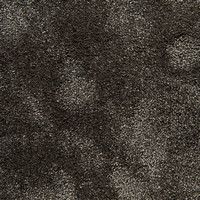
|
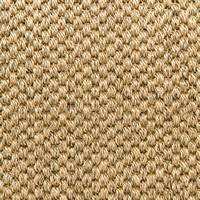
|

|
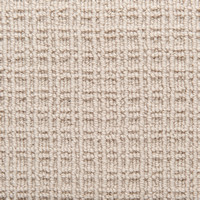
|
I have recently been to Cumbria to photograph the Dalton Nuclear Institute in Cumbria. The Institute is located on the Westlakes Science and Technology park in Moor Row, Cumbria. The project was commissioned in 2009 and is the result of a joint venture between Manchester University and the Nuclear Decommissioning Authority. It was designed by Wilson Mason Architects and completed in 2011 with a project value of £5.4m. The building comprises two linked units, the main two storey building with the black metal finish houses labs and research facilities and the single storey building houses the Ion Accelerator.
This commission was the first real job for the Nikon D800. This has been my back up camera for the last 6 months but was pressed in to service when the D700 had to go for repair. The extra couple of stops of dynamic range that the D800 produces at ISO 100 were really useful when capturing black metal cladding against a sky with the occasional bright white cloud.
I was recently at this new Obstetric unit in Kent to photograph the interior following the complete remodelling and refurbishment of the wing. I was working for Cofton Design of London the consulting M&E Engineers on the project and access was only available prior to the deep clean and installation of the majority of theatre equipment. Unfortunately for me this meant that I only had empty rooms to work with, making the composition of interesting photographs a bit of a problem, everybody was pleased with the results though.
I have recently photographed the remodelled and refurbished Mercedes-Benz showroom in Chelsea, London, for Ayshford Sansome Architects. I've visited Mercedes Chelsea in the past and the work has made a fantastic difference, it now feels like a car showroom rather than the converted furniture shop that it once was. Photographing retail spaces and car showrooms in particular is always tricky because a good design is centred around the display of the vehicle and its interaction with the customer, but as a photographer I feel my job is to capture the design of the space rather than focusing on the product.
I've recently photographed the interior of this south London apartment on the day of handover by the main contractor Bolt & Heeks. The apartment in Benbow House is adjacent to and overlooks the Globe Theatre, Tate Modern and the Millennium bridge, with full 180 degree views of the river and north bank. The apartment was stripped back to the bare shell by Bolt and Heeks and then refitted to a very high specification including leather wall facings by Bill Amberg Studio, Travertine bathrooms and solid Oak floors.
Buildings tend to look best when photographed in sunlight. If my client wants a daylight shot then I always try and schedule the shoot on a day when the weather and direction of daylight shows the building off at its best. Often this will mean rescheduling and sometimes the right forecastable weather window may take a few weeks to arrive. The worst jobs are those that have to be photographed at a specific time on a specific day, usually due to client’s access and deadline issues. Harrow School roof was one such job, when the specified day in March came round the weather was terrible, very windy, very overcast and zero degrees centigrade the last kind of day you would normally pick to capture this location.
Without direct sunlight the roofs looked really dull and flat and the sky’s easy to overexpose. I thought the only way forward was to produce the final images in Monochrome and I would resort to HDR photographs in tricky conditions like this but the HDR process always seems to highlight imperfections in metal work particularly in Black and White and so these shots are made up of one exposure for the sky and one for the roof manually layered together and then processed in Black and White. While the weather was terrible it turned out to be an enjoyable day, the client was very happy with the results and the building surveyor in me really appreciated the fantastic workmanship and detailing of the roof.
I’ve recently photographed the new exhibition and auditorium space at Prospects College, Basildon. Visually it was an interesting space, but initially I thought it was going to be very difficult to photograph it effectively. Luckily I only had that job on the day and was really able to work on the composition, deciding what the key elements were, and slowly drawing them out. Once I’d worked out what I wanted to show it was then a case a refining the composition to highlight the key elements and exclude anything that didn’t contribute to the narrative or could distract the viewer. Selecting the view point in a large open space like this is often much more difficult than smaller spaces where you have little choice but to photograph from the corner of the room.
Once I had picked the basic viewpoints, which took me about an hour, it took another 10-20 minutes to optimise the composition, often moving the camera by only 50mm at a time. The lack of interruption and lack of mobile reception really allowed me to concentrate on the project, resulting in 5 finished images taken over about 3 hours. It always gives me a lot of satisfaction when I can work though a tricky problem like this and come up with a good result.
Last week I gave a talk to 2nd Year BA photography students at the University of Northampton. The presentation covered the transition from student to working freelance architectural photographer. The talk is based on my own journey and highlights what I did well and what I would do differently with the benefit of some hindsight. The second year is the point in a course when students should be planning and targeting their efforts to make the transition into the media industry. Students that leave these decisions until later in the course appear to struggle with the transition and appear to take much longer to maximise their potential. The talk also shows how I applied valuable lessons in professionalism, planning and resource management, learnt in the construction industry and equally useful during my time as a student. I think this talk would be of great benefit to other media students and would be happy to talk to students or course leaders about it.
Here are a couple of interior photographs of a shoot of a South Kensington apartment for Alexander Rakita of AR Architecture, a Russian Architect who practices in London, The Republic of Ireland and Russia. The scheme featured major structural alterations and a complete re-modelling of the interior, all to a very high standard. Due to the extensive use of white finishes and white furniture I had to pay particular attention to the White Balance to achieve a consistent set of images. Colour temperatures varied between rooms due to the use of different light sources and the affects of natural daylight. Photographs that show more than one room are a composite of 2 finished images with the white balance adjusted to suit each individual area the 2 images are then blended together in Adobe Photoshop.
I’ve recently been photographing the new £10 million extension to Prospects College in Basildon. The 3600 m2 project was designed and managed by Ayshford Sansome Architects and is part of a long running redevelopment of the Basildon site. It was nice to photograph a scheme that made so much use of natural daylight, which even extended into the corridors through the clever use of light wells. The use of the natural daylight, natural ventilation and the management of the buildings acoustics created a nice relaxed environment to work in. The shoot took the whole day and due to the poor overcast weather I chose to shoot the exterior of the building in the evening. Overall a very nice project to photograph although achieving a decent White Balance with the yellow and blue painted walls was a bit tricky at times.
I spent a few days in Italy last week photographing a villa for a client. The weather was quiet poor while I was there and the time spent waiting for the rain to clear provided plenty of opportunity to plan shots with strong compositions and narrative. It’s amazing what you can do with a short period of good weather providing you are happy to set up shots, mark camera positions and push patio furniture around in the rain. The ability to take good twilight photographs also helps in these tricky situations.
The content used in my basic Architectural Photography CPD is now on line. The 1 hour talk deals with,
- Composition, Framing and Verticality
- Depth of field/hyper-focal distances/diffraction
- Exposure
- White balancing
- Lens choice/optimisation
- RAW v jpg v Tiff
- Raw Convertors
- Multiple exposure and HDR techniques
- Distortion and Chromatic aberration correction
- Sharpening for B&W and Colour
- Image Noise
- Dimensioning/resolution for print and web
- Colour profiles
If you have already had the basic talk and want to refer back to the presentation then contact me for the password.
There seems to be a move to more and more exaggerated banner images on websites. Web designers like these because it gives more space for text and makes the layout of a site easier. It is possible to shoot images to suit these layouts, and some subject matter works well with a narrow letterbox frame, unfortunately Architecture is not really one of them. The creation of Art, Architecture and Photography normally works best when it uses certain tried and tested golden proportions which are both aesthetic and functional. If you are thinking about redesigning your website around a letter box format think carefully about the way this will work with your existing image stock and the lack of flexibility this will create when commissioning new photography. Trying to squeeze architecture into a letter box is not a great long term proposition and will cause Palladio to revolve at high speed in his perfectly proportioned grave.
It was nice to see Chipperfield’s Hepworth gallery being nominated for the 2012 Stirling Prize. For me this must be one of the favourites. Not only does it meet the various Vitruvian ideals for a good Architecture, but it’s regenerated a particularly run down area of Wakefield. Other winning features for me are the high value durable design and the way it delivers Art to the proletariat. It’s also one those rare designs that really looks effective at any time of day in any weather conditions.
Here’s quick review of the excellent Hoodman Hoodloupe 3.0 which I’ve just started using. One of the problems with digital cameras of all types is the difficulty in see detail or even anything on the rear screen in bright light. I always use the histogram to check exposure but often with architectural or interior photography you might choose to overexpose a bit of the scene, such as the view from a window where the weather is poor or the view’s a bit disappointing. Or you may be using off camera fill flash and worried about creating hot spots which can be a bit tricky to see on the histogram. The Hoodloupe gets round all of these problems by giving you a consistent 3x magnified view of the rear screen, which lets you quickly review the image whatever the lighting conditions. It also allows you to check focus and depth of field much more effectively than looking at the rear screen with the naked eye. All this adds up to a quicker shoot and removes some of the need for taking a lot of bracketed shots, just to make sure you get a decent exposure. The centre of the image is a bit sharper than the corners but if you move your eye around you can then see the corners at full sharpness.
The loupe is small and lightweight so that you can wear it round your neck on the supplied lanyard without it becoming a pain. It also has an adjustable dioptre to accommodate different eyes and this allows it to be used with an extension hood to cover a 4” screen, making it fairly future proof. It all comes in a well made compact black carbon effect pouch.
The only downside to the whole package is the price, which is currently £75.99 from Amazon, which initially seams a bit steep, but after you’ve used it is grudgingly acceptable. I lent it to another pro-photographer last weekend and despite being a bit sceptical initially he was very impressed and ordered his own on Monday. Cheep Chinese copies are available but these don’t have the adjustable dioptre or the optical quality.
I had a nice commission recently to photograph a barn conversion on the Dorset coast. I was given the original job back in April but the lack of good and predictable weather meant that it didn’t happen until June. Luckily most clients would rather wait for appropriate weather to get the images they want. I think this shot is a great example of the ability of photography to create great narrative. I wanted to create an image that showed how the building fitted in with its surroundings, the surrounding wheat fields reflecting the barns past life. I chose to photograph it at night to allow me to draw out the stylish and minimalist interior to the exterior space.
Technically the image was really tricky. I needed several exposures of up 30 seconds to make it work and the 35 mph onshore winds meant I needed a few goes to get it right. In the end I had to spend nearly an hour and a half in the middle of the night waiting for the right light on this damp hillside being battered by the wind with only a couple of rabbits for company.
I was invited back to University last week, to see The Arts Summer Show, comprising the various Photography and Arts graduation shows. The standard of work was high but I was left fairly unmoved by the exhibition as a whole. While there I took the time to look around the foundation year art students exhibition, they are free to use photography, painting, sculpture etc. or any combination of techniques in their work, during this year grades don’t count towards degree grades.
The level of creativity in this first year was amazing, the use and combination of materials and technique inspired and it really underlined my suspicions that the academic process and the desire to achieve high grades stifles creativity and risk taking. The final year work may have greater academic value but it is produced at a cost of little or no emotional response from the viewer. In the photographic industry technical competence is taken as read and what separates photographers is their creativity. Perhaps the balance between grades and creativity needs to be reassessed.
I was in London last Thursday photographing several architectural projects for a client, one of which was the BT Tower. While touring the streets looking for a good vantage point to make the best of the early light and rare blue sky it struck me what a great example the tower was of the Vitruvian ideals of Commodity, Firmness and Delight. Opened in 1965 the Tower is redolent of times when global excitement was created by manned flights to the moon and supersonic passenger travel and not by the release of the latest slightly upgraded igadget.
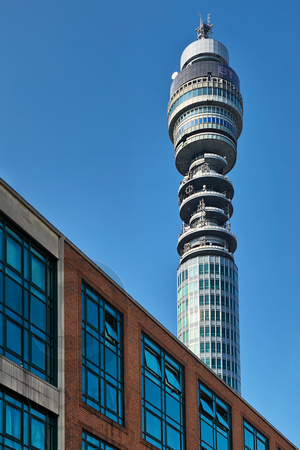
I have now produced a follow up to my original “Introduction to Architectural Photography” CPD talk the imaginatively titled “Advanced Architectural Photography”, expands on the original subject matter and is aimed at the more advance DSLR user. The new talk lasts about an hour and is tailored to suite the audience but normally covers;
- Working with Depth of field and Hyper-Focal distances
- Optimizing exposure through the use of histograms
- Achieving motion blur and Long Exposure during the day
- Dealing with multiple colour casts
- Night photography
- When and how to use multiple exposure and HDR techniques
- Post production in Photoshop
- Selecting cameras and lenses for architectural and interior work
Please get in touch if you want to know more or book the talk [email protected]
The iCon Environmental Centre in Daventry, designed by Consarc and photographed by me continues to collect awards, having just won the British Council for Offices, Regional award for Best Commercial Workspace.
It now goes forward to the National finals in October.
You can see the other regional winners at British Council for Offices
The Cafe and atrium are open to the public and it's well worth a visit if you are ever in the area.
The design and material choice by David Chipperfield mimics the massing and scale of the industrial environment surrounding the galley on this urban regeneration site. Normally when photographing Architecture I always try to capture a subject in context, showing how it interacts with its environment. When I saw the site for the first time the beauty of the Chipperfield's design came from the mono-chromatic appearance of the building and its immediate more colourful surroundings detracted from the building's stark tonality, texture and sculptural form. Looking through the viewfinder it immediately reminded me of two things the photographic work of Bernd and Hilla Becher and their black and white depiction of 1960’s industry and Ford Prefects description of Hot-black Desiato's ship in The Restaurant at the End of the Universe "..light just seems to fall into it"
I went back on a dull day and photographed the building with as little extraneous colour as possible, trying to heighten the sense of form and texture, and in this case isolating it from its surroundings. I intentionaly included a small hint of colour in each image to try and heighten the viewer’s awareness of the absence of colour.
All taken with my favorite lens the Nikon 24mm PC-E Tilt/Shift.

